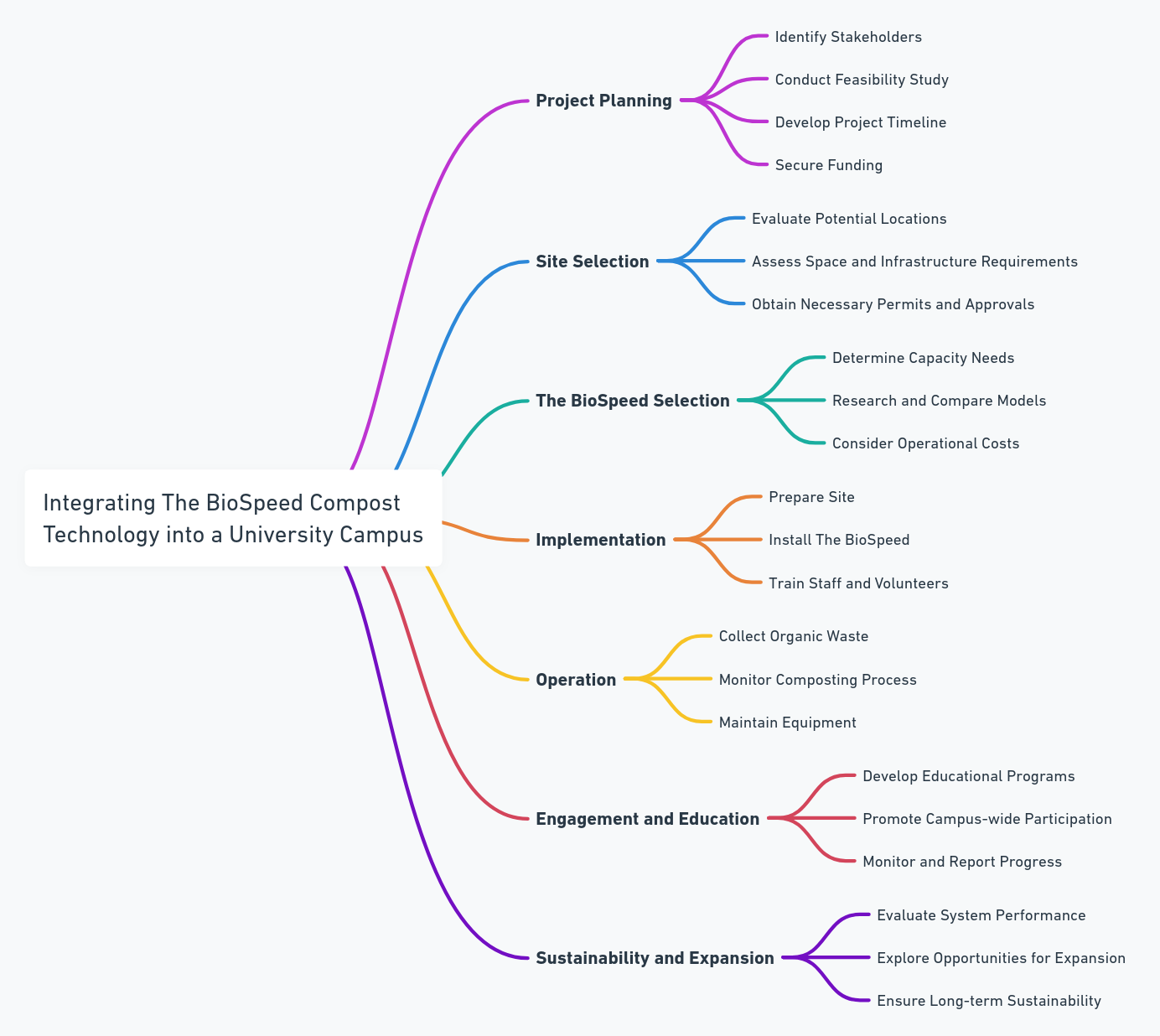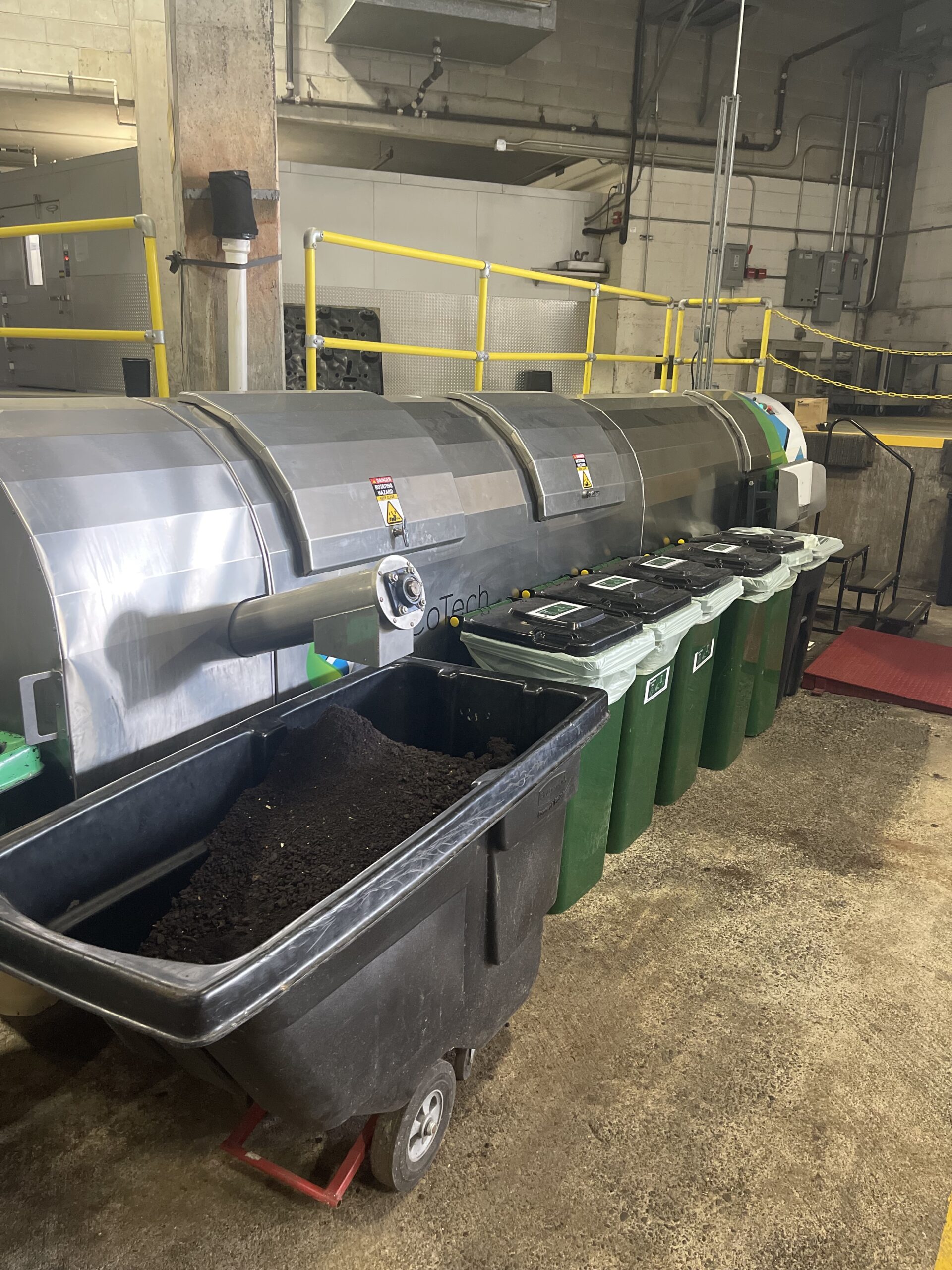The Shaky Pillars of California’s Renewable Natural Gas Initiative
In recent years, Renewable Natural Gas (RNG) has been hailed as a cornerstone of the green energy transition, particularly within the transportation sector. Its rapid growth, fueled by generous policy incentives and massive private investments, has positioned RNG as a critical player in the United States’ efforts to reduce greenhouse gas emissions. However, a comprehensive report titled “2030 California Renewable Natural Gas Outlook” by the International Council on Clean Transportation (ICCT) presents a sobering assessment of RNG’s potential to contribute to California’s environmental goals by 2030. This article delves into the report’s findings, shedding light on the limitations, challenges, and the real impact of RNG within the state’s energy landscape.
The Evolution of RNG: Sparking Hopes for a Cleaner Energy Future
The Growth of Renewable Natural Gas
Renewable Natural Gas has seen a remarkable surge in the United States, driven by federal and state policy incentives aimed at subsidizing its use in heating, power, and transportation. California, in particular, has made significant strides, with fleet operators and jurisdictions investing heavily in natural gas-fueled vehicles, intending to power them with RNG. This push towards RNG is part of a broader strategy to meet the state’s ambitious low-carbon and air quality standards.
Policy Incentives and RNG Expansion
The expansion of RNG has been significantly supported by policies such as the Low-Carbon Fuel Standard (LCFS), which incentivizes the production and use of low-carbon fuels. The LCFS has made RNG one of the largest methods of compliance, highlighting the state’s commitment to reducing carbon emissions through innovative energy solutions.
The Hard Truths of RNG’s Potential by 2030
Limited Supply and High Costs
The ICCT report provides a critical analysis of RNG’s potential as a low-carbon fuel in California by 2030, taking into account resource availability, production cost, and climate performance. One of the report’s key findings is the limited supply and high costs associated with RNG. It estimates that cost-viable volumes of RNG could displace, at most, 8.9% of heavy-duty fuel demand in California by 2030. This starkly contrasts with the initial optimism surrounding RNG’s capacity to significantly reduce carbon emissions in the transportation sector.
Environmental Performance and Market Opportunities
The environmental performance of RNG, particularly in terms of life-cycle emission reductions, may have been overstated due to outdated assumptions. The report suggests that many RNG pathways certified under California’s LCFS are assigned low or negative life-cycle emissions values based on the assumption that methane emissions are avoided. However, with ongoing revisions to California’s climate policies, the actual benefits of RNG could be less than previously thought.
The Overestimated Benefits of RNG
Revising Climate Policies and RNG’s Impact
The potential revision of climate policies, including a 40% reduction target in statewide methane emissions by 2030, poses significant implications for RNG’s environmental benefits. The report finds that dairy RNG, for instance, would release 30-40 grams of CO2-equivalent per megajoule, which is around half of the life-cycle GHG emissions of natural gas. This calls into question the effectiveness of RNG in achieving the state’s climate goals.
The In-State RNG Dilemma
Competitive Implications for In-State Producers
Updating carbon accounting in the LCFS could increase the competitiveness of in-state RNG producers by reducing the potential of cost-viable RNG produced outside California. However, this would not significantly affect the economics of in-state RNG production, nor would it impact landfill gas projects and small-scale farms that treat waste in pasture or solid storage applications. This highlights the complex dynamics within the RNG market and the need for careful policy consideration to support the state’s environmental objectives.
Natural Gas Vehicles: Not the Climate Saviors We Hoped For
Limited Climate Benefits Compared to Diesel
One of the report’s most striking findings is the limited climate benefits of natural gas vehicles over diesel. It estimates that a natural gas tractor-trailer could generate, at most, approximately 11% lifetime GHG savings relative to a diesel tractor-trailer, even when assuming California achieves its maximum in-state RNG potential. This is a far cry from the transformative impact that RNG was expected to have on the transportation sector’s carbon footprint.
The Superiority of Battery-Electric Vehicles
In contrast, the report estimates that a battery-electric tractor-trailer generates approximately 57% GHG savings over its lifetime compared to a diesel tractor-trailer. This significant difference underscores the potential of battery-electric vehicles as a more effective solution for reducing GHG emissions in the transportation sector, challenging the notion of RNG as a panacea for California’s environmental challenges.
The Path Forward: Navigating the Complexities of RNG
Policy Recommendations for a Sustainable RNG Future
The ICCT report offers several policy recommendations to maximize the environmental benefits of RNG while acknowledging its limitations. These include revising carbon accounting methods to reflect the latest scientific understanding and regulatory changes, as well as prioritizing the development and deployment of zero-emission vehicle technologies over RNG.
A Realistic Assessment of Alternative Fuels
As California continues to lead the way in environmental innovation, it is crucial to maintain a realistic perspective on the potential and limitations of alternative fuels like RNG. The state’s ambitious climate goals require a multifaceted approach that balances the pursuit of innovative energy solutions with the need for practical, effective strategies to reduce GHG emissions.
Conclusion
The “2030 California Renewable Natural Gas Outlook” report by the ICCT provides a comprehensive and critical analysis of RNG’s role in California’s energy future. While RNG has been touted as a key component of the state’s green energy transition, the report’s findings highlight the need for a more nuanced understanding of its potential and limitations. As California continues to navigate the complexities of reducing its carbon footprint, the insights from this report will be invaluable in shaping policies and strategies that truly advance the state’s environmental objectives.
Eco-Oil Rig? How Trinidad’s Offshore Giants Are Turning Waste into Soil!
In the heart of the Caribbean, amidst the deep blue waters off the coast of Trinidad and Tobago, an unexpected green initiative is taking place. It’s a story of innovation, sustainability, and the unlikely marriage of agriculture and the oil industry. Spearheaded by a local businessman and farmer operating Phillip’s Produce, this project is challenging the narrative of environmental stewardship by one of the world’s largest oil producers.
The Genesis of a Green Initiative
Phillips’s Produce discovered an open bid from a leading global oil producer, seeking innovative food waste composting solutions for their offshore rigs. This opportunity promised to challenge the status quo and promote sustainability, compelling Phillip Produce to engage.
A Brilliant Plan at Sea
Phillip’s recognized the potential of the BioSpeed composter, a state-of-the-art technology designed to accelerate the composting process. His vision was to deploy this technology on the oil rigs, transforming food waste into a valuable resource. The BioSpeed composter, known for its efficiency, would process the organic waste into a usable soil amendment, a commodity Phillip’s could utilize back on the company farm.
Multiple Benefits of the BioSpeed Composter
The benefits of Phillip’s plan extended beyond the mere recycling of food waste. By implementing the BioSpeed composter on the oil rigs, several other advantages emerged:
- Deterring Seabirds: The constant presence of seabirds, attracted by food waste, has been a nuisance for oil rig operations. The BioSpeed composter would significantly reduce this attractant, mitigating the issue of birds and their droppings on the rigs.
- Compliance with Sea Laws: Waste management at sea is governed by strict regulations. By processing the waste on-site, the oil rigs would not only comply with these laws but also set a new standard for environmental responsibility.
- Reduction of Food Waste: The BioSpeed technology promised to reduce food waste by an impressive 70-90%, minimizing the volume of waste transported back to land.
A Pilot Program with Promise
The first BioSpeed unit was introduced as a pilot program, set to run until June. This initial phase is critical, serving as a litmus test for the feasibility and impact of the initiative. Should the pilot prove successful, the oil company plans to expand the program to an additional 18 oil rigs off the coast of Trinidad.

The Irony of Sustainability on an Oil Rig
The juxtaposition of a sustainability initiative on an oil rig is not lost on observers. It’s an irony that highlights the complex relationship between industry and environmental stewardship. However, this initiative represents a significant step in the right direction. By embracing innovative solutions like the BioSpeed composter, the oil industry can play a crucial role in mitigating its environmental impact.
Taking Steps Towards a Greener Future
This groundbreaking initiative serves as a testament to the potential for sustainability in even the most unlikely places. It demonstrates that with innovation and commitment, strides can be made towards a more sustainable future, even within industries traditionally viewed as environmental adversaries.
(BioSpeed M1 by BioCoTech Americas)
Conclusion: A Symbol of Optimism.
The BioSpeed composting initiative off the coast of Trinidad and Tobago stands as a symbol of optimism. It showcases the potential for environmental stewardship within the oil industry and highlights the role of innovative solutions in addressing ecological challenges. As the world grapples with the dual imperatives of energy production and environmental conservation, initiatives like this offer a glimpse into a future where these objectives can coexist.
In the end, the success of this pilot program could herald a new era for the oil industry, one where sustainability is not just a buzzword but a fundamental aspect of operations. As Philip’s Produce and their partners await the results of the pilot, the stakeholders watch, hopeful for a positive outcome that could set a precedent for oil rigs around the globe.
Charting a Sustainable Path: 7 Carbon Accounting Success Stories That Inspire
In the realm of sustainability, carbon accounting has emerged as a pivotal tool for organizations aiming to reduce their environmental impact. This article delves into ten exemplary cases where carbon accounting has not only guided companies toward greener practices but also showcased the potential for significant ecological transformation.
Understanding Carbon Accounting
Carbon accounting, also known as greenhouse gas accounting, quantifies the greenhouse gases (GHGs) produced directly and indirectly by a business or organization’s activities. It focuses on carbon dioxide (CO2), the most common GHG, converting all major GHGs into a carbon dioxide equivalent (CO2e) based on their global warming potential (GWP). This process allows organizations to measure their climate impact and set goals for emission reduction.
The Greenhouse Gas Protocol categorizes emissions into three scopes: direct emissions (Scope 1), indirect emissions from purchased energy (Scope 2), and all other indirect emissions (Scope 3), which often represent the largest portion of an organization’s carbon footprint. Carbon accounting is essential for organizations aiming to improve efficiency, introduce renewables, and purchase offsets to achieve net-zero targets. It provides the data needed for effective decision-making and tracking the impact of emissions reduction initiatives. Moreover, it supports environmental, social, and governance (ESG) reporting, increasingly demanded by investors and stakeholders concerned about sustainability risks.
1. The Leap Towards Renewable Energy
 Renewable Energy Initiatives
Renewable Energy Initiatives
Google’s commitment to operating on 24/7 carbon-free energy by 2030 is a pioneering step towards sustainable energy use. This ambitious goal aims to match every kilowatt-hour of electricity consumed by Google’s operations with carbon-free energy sources, such as solar and wind, every hour of every day. This initiative is not just about reducing Google’s carbon footprint; it’s about leading a global shift towards decarbonizing the power grid.
Since 2017, Google has matched 100% of its annual electricity consumption with renewable energy purchases. However, recognizing the urgency of the climate crisis, Google has set its sights higher with the 24/7 carbon-free energy goal. This approach ensures that Google’s operations are powered by clean energy around the clock, pushing beyond the industry standard of annual matching with renewables. It’s a commitment that challenges the status quo and sets a new benchmark for corporate sustainability.
Google’s strategy involves three main focus areas: purchasing carbon-free energy, accelerating the development of new technologies, and transforming the energy system through partnerships and advocacy. The company is investing billions in clean energy projects, developing tools to optimize energy use, and working with partners to advocate for policies that support grid decarbonization.
The Impact: Switching to renewable energy is a testament to a company’s dedication to sustainability, offering a blueprint for others to follow. This initiative not only benefits Google by aligning with its sustainability goals but also contributes to broader community development. By investing in renewable energy projects, Google supports local economies, creates jobs, and helps to build a cleaner, more sustainable electricity grid for everyone. As Google moves towards its 24/7 carbon-free energy target, it offers a model for other companies to follow, demonstrating that a sustainable future is both possible and profitable.
2. Rethinking Supply Chains
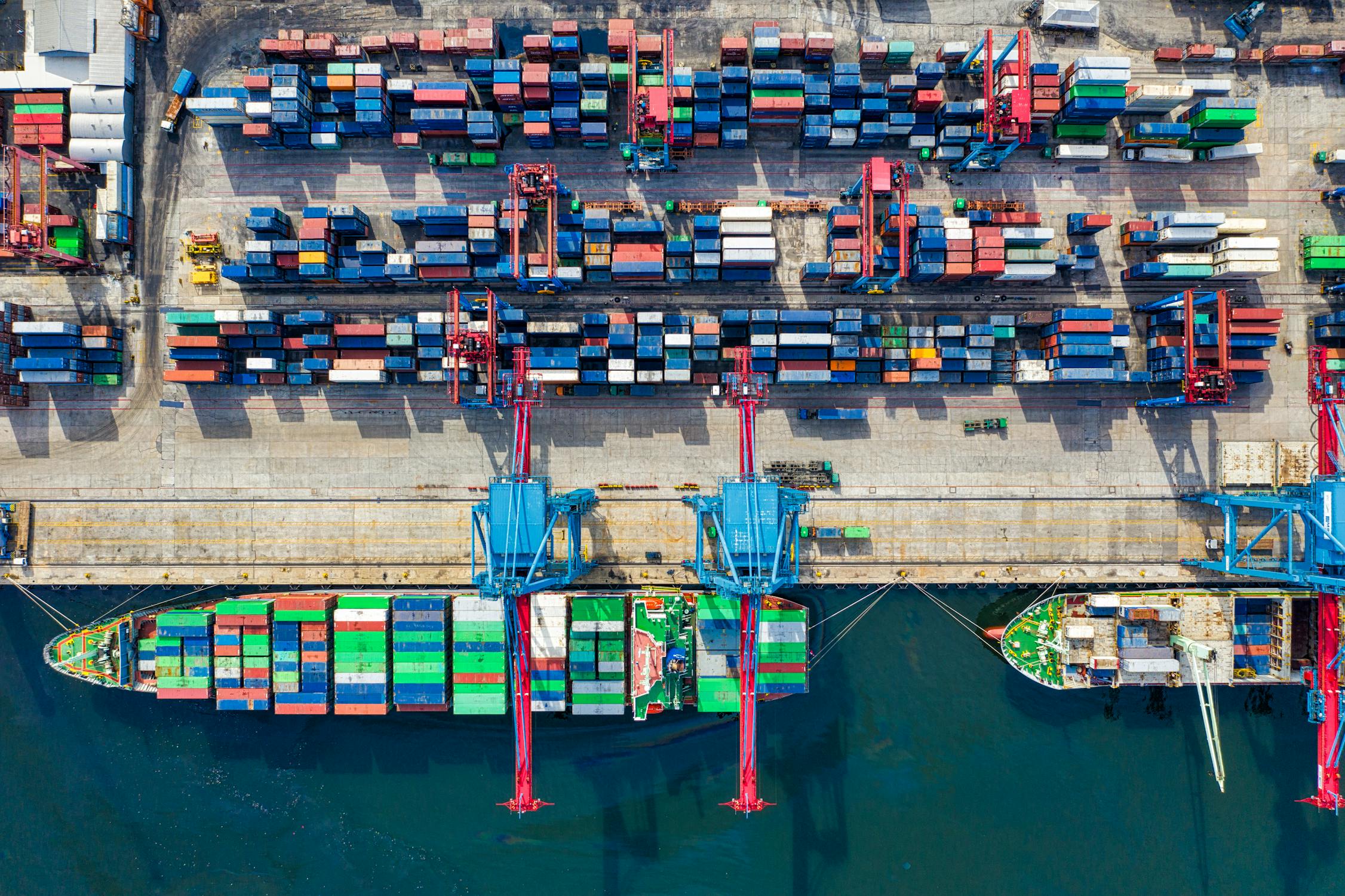
Eco-Friendly Supply Chain Management
Patagonia’s Supply Chain Environmental Responsibility Program is a comprehensive initiative aimed at reducing and eliminating the environmental impacts associated with the manufacturing of its products and materials. This program is implemented globally across supplier facilities, covering a wide range of environmental impact areas such as water use, energy consumption, greenhouse gas emissions, and waste management. Patagonia employs internal standards and industry-wide tools like the Higg Index, alongside recognizing third-party certifications like the bluesign® system, to ensure suppliers meet its environmental expectations.
The program’s core objective is to encourage suppliers to adopt better and best practices in environmental management, thereby recognizing them as environmentally responsible partners in Patagonia’s supply chain. This evaluation process is integral to Patagonia’s supply chain decisions, including the approval and management of suppliers and their manufacturing facilities. Over the years, Patagonia has seen a reduction in environmental impacts within its supply chain through continuous learning, training, and improvements, including the implementation of wastewater and air-emission treatment systems that exceed legal requirements.
Looking forward, Patagonia is focusing on performance and the implementation of best practices for continuous improvement. This includes working on a new carbon-reduction performance program with key raw material suppliers to support the decarbonization of their operations. Patagonia’s efforts to reduce the carbon footprint of manufacturing emphasize energy efficiency, renewable electricity, and the use of less carbon-intensive fuels.
The Impact: Optimizing supply chains for sustainability can lead to significant emissions reductions, showcasing the importance of environmental responsibility in procurement processes, ultimately a carbon accounting success.
3. Innovating Product Life Cycles
Sustainable Product Design in Carbon Accounting
IKEA’s commitment to using renewable and recycled materials by 2030 highlights the importance of considering sustainability in product design and lifecycle. This ambitious target is part of a broader strategy to reduce the environmental impact of its products throughout their lifecycle, from design to disposal. IKEA aims to empower consumers to live more sustainably by offering affordable, resource, and energy-efficient products. The company’s focus extends beyond materials to include the promotion of sustainable living practices, such as energy conservation, air and water purity, and waste reduction.
In the realm of food, IKEA is making strides toward sustainability by offering more plant-based options and recognizing the environmental impact of food production. This approach aligns with the company’s vision of making healthy, sustainable food accessible and appealing to the many.
The Impact: Lifecycle analysis is crucial for minimizing the environmental impact of products, encouraging a shift towards a circular economy. Through these efforts, IKEA is not just transforming its operations but is also setting a precedent for the retail industry, demonstrating that large-scale, profitable business can go hand-in-hand with environmental responsibility.
4. Embracing Carbon Offsetting
Strategic Carbon Offset Programs in Carbon Accounting
The Walt Disney Company’s commitment to environmental sustainability is deeply integrated into its operations and growth strategy, aiming to support a healthier planet for future generations. Disney’s environmental stewardship is evident in its long-term vision to reach net-zero greenhouse gas emissions, with significant efforts made towards reducing emissions, conserving water, reducing waste, and using lower-impact products. A key component of Disney’s strategy is its investment in natural climate solutions, including forest conservation projects, which play a crucial role in its carbon offset strategy to achieve carbon neutrality.
Disney has set ambitious goals for 2030, including reducing absolute emissions from direct operations (Scope 1 & 2) by 46.2% against a 2019 baseline, achieving net-zero emissions for direct operations, and reducing Scope 3 emissions in line with a ‘well below 2°C’ scenario. To support these goals, Disney is focusing on avoiding emissions, investing in energy efficiency, low-carbon fuel innovation, and powering operations with zero-carbon electricity. The company’s commitment to purchasing or producing 100% zero-carbon electricity by 2030 underscores its dedication to environmental sustainability.
The Impact: Carbon offsetting can complement direct emission reduction efforts, supporting global sustainability projects.
5. Building Sustainably

Innovations in Green Building for Carbon Accounting
The Edge, located in Amsterdam, is an office building that sets a new standard for environmental sustainability through its use of smart technology and energy-efficient design. It incorporates a wide range of sustainable features, including extensive solar panels, rainwater harvesting for toilet flushing and irrigation, energy-efficient lighting, and a sophisticated building management system that optimizes energy use. The building’s design not only reduces carbon emissions but also creates a healthier and more productive environment for its occupants.
The construction of The Edge demonstrates the potential of green building practices to significantly reduce carbon emissions and impact the fight against climate change positively. By integrating renewable energy sources, employing energy-saving technologies, and using sustainable materials, The Edge serves as a model for future construction projects aiming to achieve sustainability and energy efficiency.
The Impact: Sustainable architecture not only lowers carbon footprints but also promotes healthier living and working environments.
6. Minimizing Waste
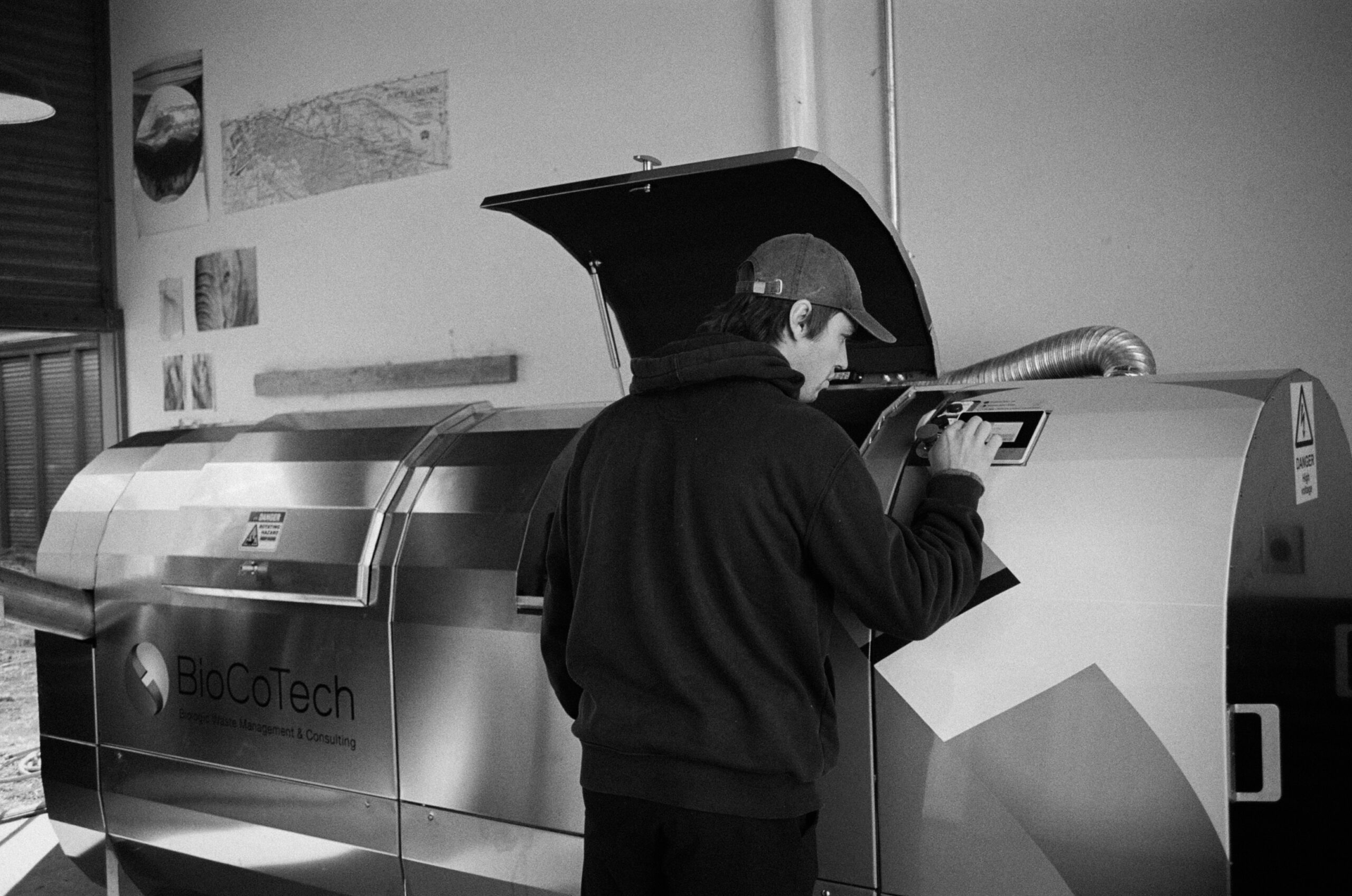
Zero Waste Goals
Microsoft has set a bold ambition to achieve zero waste across its direct operations, products, and packaging by 2030, addressing the urgent need to protect the world’s ecosystems and reduce carbon emissions from waste. Annually, more than 11 billion tons of waste are produced globally, highlighting the critical role waste management plays in environmental sustainability. Microsoft’s zero waste goal is part of a broader environmental sustainability initiative focusing on carbon, water, ecosystems, and waste, aiming to empower both the company and its customers with technology and learnings to pursue similar goals.
To tackle its waste creation, Microsoft plans to reduce, reuse, repurpose, or recycle its solid, compost, electronics, construction and demolition, and hazardous wastes. A key strategy includes the establishment of Microsoft Circular Centers to reuse and repurpose servers and hardware in its data centers, significantly reducing e-waste. Additionally, Microsoft commits to eliminating single-use plastics in its packaging by 2025 and leveraging technology to enhance waste accounting.
By 2030, Microsoft aims to divert at least 90% of the solid waste headed to landfills and incineration from its campuses and data centers, manufacture 100% recyclable Surface devices, and achieve 100% recyclable packaging in OECD countries. These efforts build upon ongoing waste reduction initiatives that began in 2008, leading to zero waste certifications for its Puget Sound Campus and data centers in Boydton, Virginia, and Dublin, Ireland.
By utilizing the BioSpeed Composting Technology, corporate campuses can easily divert their food waste and other organic materials. This will allow companies like Microsoft to achieve their ambitious waste reduction goals with the added benefits of cost savings and the elimination of heavy-duty trucking.
The Impact: Microsoft’s zero waste goal by 2030 exemplifies leadership in environmental sustainability within the tech industry. By adopting circular economy principles and leveraging technology for waste reduction, Microsoft not only minimizes its own environmental impact but also sets a benchmark for eco-friendly practices globally. This initiative underscores the pivotal role of corporate responsibility in driving broader ecological change.
7. Sustainable Procurement Practices
 Responsible Sourcing Initiatives
Responsible Sourcing Initiatives
Starbucks’ commitment to ethical sourcing is exemplified through its Coffee and Farmer Equity (C.A.F.E.) Practices, a comprehensive coffee-buying program developed in collaboration with Conservation International. Launched in 2004, C.A.F.E. Practices was among the first in the coffee industry to set ethical sourcing standards, designed to ensure transparent, profitable, and sustainable coffee growing practices. This program not only aims to secure a long-term supply of high-quality coffee but also to positively impact the lives and livelihoods of coffee farmers and their communities.
C.A.F.E. Practices evaluates farms against rigorous economic, social, and environmental criteria, including financial reporting, workers’ rights protection, water conservation, and biodiversity preservation. With over 200 indicators and a third-party verification process overseen by SCS Global Services, the program ensures the integrity and quality of audits. This initiative is part of Starbucks’ broader efforts to support sustainable coffee farming, which also includes farmer loans, open-source agronomy work, farmer support centers, tree donations, and Origin Grants focused on empowering women and girls.
The Impact: By responsibly sourcing its coffee, Starbucks significantly contributes to reducing indirect emissions associated with coffee production. The company’s goals to achieve carbon-neutral green coffee and to conserve water usage in green coffee processing by 50% by 2030 further highlight Starbucks’ dedication to sustainability and environmental stewardship. Through C.A.F.E. Practices and its comprehensive approach to ethical sourcing, Starbucks showcases the critical role of sustainable procurement in addressing global environmental challenges.
Conclusion
These seven success stories underscore the transformative potential of carbon accounting in driving organizational sustainability. By adopting carbon accounting practices, companies can not only reduce their environmental impact but also inspire others to embark on their own sustainability journeys. The path to a greener future is paved with data-driven decisions, innovative strategies, and collective action towards sustainability.
Homemade Fertilizer for Potted Plants: 6 Secret Recipes
Gardening enthusiasts know the joy of watching their potted plants thrive. An essential element of healthy plant growth is the right fertilizer. While the market is flooded with various types of fertilizers, homemade options offer a sustainable, cost-effective, and equally effective alternative. Here, we explore six of the best ways to make homemade fertilizer for potted plants, ensuring they receive all the nutrients they need to grow strong and vibrant.
Understanding Nutrient Needs of Homemade Fertilizer for Potted Plants
Before diving into homemade fertilizers, it’s crucial to understand what your plants need. The primary nutrients all plants require are nitrogen (N), phosphorus (P), and potassium (K), often referred to as NPK. Nitrogen promotes leafy growth, phosphorus supports root and flower development, and potassium aids in overall plant health. In addition to these, plants also benefit from secondary nutrients and micronutrients, such as calcium, magnesium, and iron.
1. Compost Tea
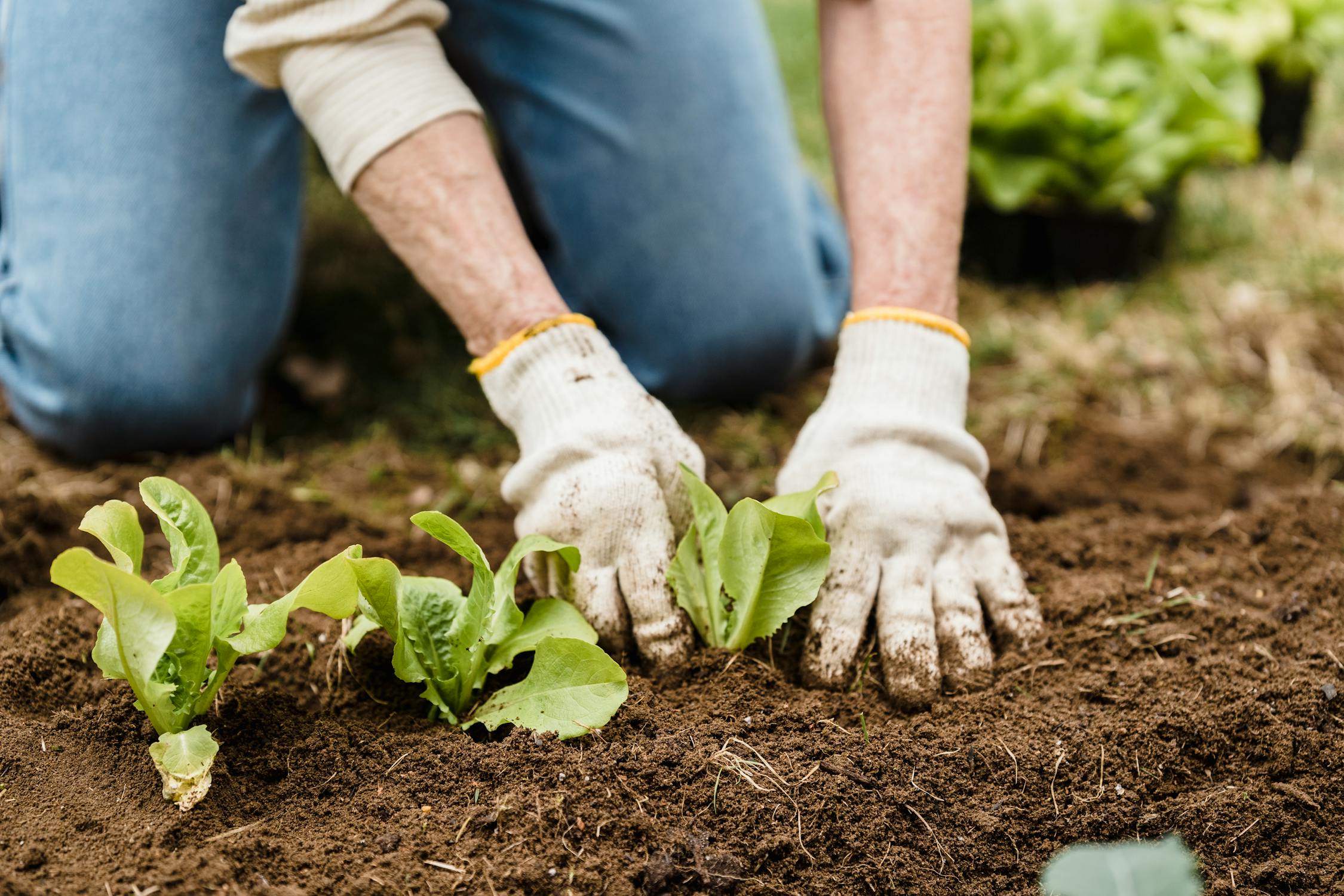 The Essence of Compost Tea
The Essence of Compost Tea
Compost tea is a nutrient-rich solution made by steeping compost in water. It’s an excellent way to provide your plants with a balanced range of essential nutrients.
How to Make It
- Fill a bucket with water and let it sit for 24 hours to dechlorinate.
- Add compost to a burlap sack or an old pillowcase and tie it closed.
- Submerge the sack in the water and let it steep for 24-48 hours, stirring occasionally.
- Remove the sack, and your compost tea is ready to use.
Application
Dilute the compost tea with water at a 1:10 ratio and use it to water your plants every 4-6 weeks. It’s gentle enough to be used at every watering without the risk of nutrient burn.
2. Eggshell Fertilizer
The Power of Eggshells
Eggshells are rich in calcium, which is crucial for cell wall development in plants. They can help prevent blossom end rot in certain plants like tomatoes and peppers.
How to Make It
- Rinse and collect eggshells until you have a good amount.
- Dry them thoroughly, then grind them into a fine powder using a blender or mortar and pestle.
- Store the powder in a sealed container until ready to use.
Application
Sprinkle the eggshell powder around the base of your plants or mix it into the potting soil to improve calcium content. This is particularly beneficial when repotting or planting new plants.
3. Banana Peel Fertilizer

Unlocking Potassium with Banana Peels
Banana peels are an excellent source of potassium, essential for plant growth and disease resistance. They also contain other nutrients like phosphorus and calcium.
How to Make It
- Cut banana peels into small pieces and dry them in the sun or a low oven.
- Once dry, grind them into a powder.
- Alternatively, you can soak fresh banana peels in water for a few days and use the water as a liquid fertilizer.
Application
Mix the banana peel powder into the soil or sprinkle it on the surface. If using banana peel water, water your plants with it once a month for a potassium boost.
4. Coffee Ground Fertilizer
The Benefits of Coffee Grounds
Coffee grounds are a great source of nitrogen, making them perfect for leafy plants. They also improve soil structure and attract earthworms.
How to Make It
- Collect spent coffee grounds and let them dry to prevent mold growth.
- You can use them directly or mix them with other organic materials to create a more balanced compost.
Application
Mix the coffee grounds into the soil or sprinkle them on top. For a liquid version, steep 2 cups of spent coffee grounds in a gallon of water for a few hours, then strain and use the solution to water your plants.
5. Wood Ash Fertilizer
The Alkaline Advantage
Wood ash is rich in potassium and calcium, and it can help neutralize acidic soils, making it an excellent amendment for certain plants.
How to Make It
- Collect wood ash from your fireplace, ensuring it’s from untreated wood.
- Sift the ash to remove any large pieces or debris.
Application
Sprinkle a small amount of wood ash around your plants once a year. Be cautious, as too much can raise the pH too high for some plants. It’s best used on plants that thrive in slightly alkaline conditions.
6. Aquarium Water
A Nutrient-Rich Resource
Water from freshwater fish tanks is loaded with nitrogen and other nutrients, making it an excellent, ready-to-use liquid fertilizer.
How to Make It
- Simply use the water from your fish tank when you perform regular changes.
- Ensure the water doesn’t contain any chemicals or medications that could harm your plants.
Application
Use aquarium water to water your plants as needed. It’s especially beneficial for indoor plants that require consistent moisture.
Conclusion
Creating homemade fertilizer for your potted plants is not only a sustainable choice but also a rewarding activity that connects you more deeply with your garden. Each of these six methods offers unique benefits tailored to different nutrient needs, ensuring your plants remain healthy and vibrant. Remember, the key to successful fertilization is understanding your plants’ specific needs and adjusting your approach accordingly. Happy gardening!
Pro Tip: If you are a business with aspirations of generating homemade fertilizer for potted plants, learn more about the BioSpeed Compost Technology.
In the realm of sustainable gardening, the quest for natural, effective solutions to enhance soil health and productivity is never-ending. Among the myriad of options, one stands out not just for its efficacy but for its remarkable sustainability: mushroom compost. Often hailed as a garden’s secret superfood, mushroom compost is a treasure trove of benefits waiting to be unlocked by sustainability professionals and gardening enthusiasts alike.
What is Mushroom Compost?
Mushroom compost, often referred to as spent mushroom substrate, is a byproduct of the mushroom farming industry. It’s composed of organic materials like straw, poultry manure, and peat, which have been used as a growing medium for mushrooms. After the mushrooms have been harvested, the remaining material is pasteurized to kill any pathogens, resulting in a nutrient-rich compost that’s ready to breathe life into your garden.
The Environmental Benefits of Mushroom Compost
Mushroom compost stands at the intersection of waste management and sustainable gardening. Its production epitomizes the circular economy, transforming agricultural and industrial byproducts into a valuable resource. This not only reduces waste but also lessens our reliance on chemical fertilizers, which are often derived from non-renewable resources and can have detrimental effects on the environment.
Nutritional Profile: The Superfood Status
Mushroom compost is packed with nutrients essential for plant growth, such as nitrogen, phosphorus, and potassium, along with a host of micronutrients. Unlike synthetic fertilizers that offer a quick but fleeting nutrient boost, mushroom compost releases its riches slowly, ensuring that plants receive a steady supply of nutrients over time. This slow-release mechanism helps build long-term soil fertility and health, laying the groundwork for sustainable gardening success.
How Mushroom Compost Improves Soil Structure
One of the most significant benefits of mushroom compost is its ability to enhance soil structure. It improves aeration, allowing roots to breathe and grow more freely. It also enhances water retention in sandy soils and drainage in clay soils, creating an ideal environment for plant roots. These improvements can lead to healthier plants that are more resilient against pests and diseases.
Applications of Mushroom Compost in Sustainable Gardening
Mushroom compost is incredibly versatile and can be used in various gardening scenarios:
- Vegetable Gardens: Incorporate mushroom compost into your vegetable garden to boost yield and improve soil health.
- Flower Beds: Use it to enrich the soil for flowers, promoting vibrant blooms and robust growth.
- Lawns: Top-dress your lawn with mushroom compost to enhance its greenery and vitality.
When using mushroom compost, it’s essential to mix it well with the existing soil or use it as a mulch. Its high organic matter content not only feeds the soil but also improves its physical properties.
Let’s take a closer look: Mushroom Compost Studies Published in Science Direct
- Spent Mushroom Substrate (SMS): This is the residual waste from the mushroom cultivation industry, typically containing a mix of agricultural wastes such as straw, animal manure, and inorganic substances like gypsum and limestone.
- By-products Valorization: Mushroom cultivation generates a significant amount of by-products, which have potential applications in bioremediation, production of nutraceuticals, bioactive compounds, animal feed, energy production, and biobased materials.
- Nutritional Value: The by-products, including SMS, have great nutritional value and can be used in various applications. For instance, SMS can be an efficient animal feed and a source for energy production and biobased materials.
- Environmental Benefits: Mushroom cultivation helps in recycling lignocellulosic wastes by converting them into food for human consumption. The by-product, SMS, can be applied in several applications, contributing to environmental sustainability.
- Residue Management: For every kilogram of mushroom fruiting body produced, there is a resultant by-product of 5–6 kg. Managing these residues is crucial for both economic and environmental reasons.
- Applications of SMS: SMS can be used for bioremediation purposes, recovering highly valued products, and as a substrate for further mushroom cultivation. It is also noted for its potential in improving soil quality, absorbing pollutants, and serving as a carrier for microbes with plant growth-promoting properties.
Specific Benefits of SMS:
- Soil Quality Improvement: SMS can enhance soil quality, making it a valuable resource for agriculture.
- Bioremediation: Due to its composition, SMS can be used for the biodegradation and bioremediation of toxic pollutants, such as phenolic compounds, fungicides, and polycyclic aromatic hydrocarbons (PAHs).
- Production of Enzymes: SMS is a source for extracting crude enzymes like lignin peroxidase, laccase, and manganese peroxidase, which are useful for environmental cleanup efforts.
- Antibacterial and Antioxidant Activities: Polysaccharides found in SMS have shown antibacterial, antioxidant, antitumor, and renoprotective activities.
- Agricultural Use: SMS improves soil quality and shows effectiveness against many soil-borne plant pathogens, making it a valuable addition to agricultural practices.
Challenges and Considerations
While mushroom compost is generally beneficial, there are a few considerations to keep in mind. Its salt content can be higher than other composts, which might not suit salt-sensitive plants. However, this issue can often be mitigated by using the compost in moderation and ensuring it’s well-composted and aged.
Another consideration is the initial ammonia smell, which dissipates as the compost cures. It’s a small price to pay for the myriad benefits mushroom compost brings to the garden.
Getting Started with Mushroom Compost
For those looking to integrate mushroom compost into their gardening practice, sourcing quality compost is key. Many garden centers and compost suppliers offer mushroom compost, or you can connect with local mushroom producers who might be looking for sustainable ways to dispose of their spent substrate.
For the DIY enthusiasts, making your own mushroom compost can be a rewarding project. While it won’t be identical to the commercial product (since it won’t have gone through the mushroom growing process), you can still create a nutrient-rich compost by mimicking the ingredients and composting process.
Conclusion
Mushroom compost is a true superfood for gardens, offering a sustainable, nutrient-rich solution to enhance soil health and boost plant growth. Its benefits extend beyond nutrition, improving soil structure, water management, and overall garden vitality. By incorporating mushroom compost into your gardening practices, you’re not just nurturing your plants; you’re contributing to a more sustainable and environmentally friendly gardening ecosystem.
As we continue to explore and embrace sustainable gardening practices, let the secret superfood of mushroom compost inspire you to new heights of productivity and environmental stewardship. Your garden—and the planet—will thank you.
Call to Action
Have you used mushroom compost in your garden? Share your experiences and tips in the comments below. Let’s grow our knowledge and our gardens together, one scoop of compost at a time.
Community Composting: The Unexpected Benefits of Decentralizing Traditional Waste Management.
In the quest for sustainable waste management practices, an innovative concept is making waves, promising not just environmental stewardship but also economic prosperity. Community composting, facilitated by advanced compost machines and other composting techniques, is revolutionizing the way businesses, schools, campuses, and communities handle organic waste. This strategy doesn’t just mitigate environmental impact; it also unveils significant economic advantages, laying the groundwork for a resilient future. Let’s explore how this approach is turning the tide, transforming organic waste into a cornerstone of financial and environmental resilience.
Economic Empowerment through Community Composting and Decentralized Waste Management
Community composting offers a pathway to economic empowerment by mitigating the surging costs tied to conventional waste management practices, a challenge increasingly faced by cities worldwide. In New York, the push for a 9% increase in commercial waste rate caps and Spokane’s impending 10% hike in garbage collection fees by 2024 exemplify the financial strain on municipalities. This trend mirrors the global escalation in solid waste management costs, with the projected cost of solid waste management expected to leap from $205 billion to an astonishing $375 billion.
Adding to this narrative, a report from the Environmental Research & Education Foundation (EREF) highlights a nationwide issue, revealing that ton-weighted average tipping fees for U.S. municipal solid waste landfills surged by 11% from 2021 to 2022, reaching $60.34 per ton. This increase, the sharpest since at least 2018, was driven by rising vehicle manufacturing and maintenance costs, fuel surcharges, as well as overall inflation. The Northeast experienced the highest fees, with average tipping fees reaching $85.41, but significant increases were also observed in the Midwest and South-Central regions. This data underscores the broader economic pressures faced by waste management across the country, further emphasizing the financial benefits of community composting.
By shifting towards community composting, cities, and businesses can significantly reduce the financial strain of waste management. This approach eliminates the need for frequent pickups and the long haul to centralized facilities, which are major contributors to the ballooning costs. Instead, processing organic waste on-site offers a dual benefit: slashing operational expenses and freeing up resources to fuel growth and innovation. This sustainable strategy not only addresses the immediate financial challenges of waste management but also aligns with broader environmental and economic goals.
Generating Revenue from Compost Production
Community composting not only promotes savings but also introduces potential revenue channels. The compost generated is highly sought after by a diverse group of consumers, including farmers, gardeners, and landscapers, due to its rich nutrient content. For example, based on the current market and the quality of the compost, it can be sold for about $20 to $50 per cubic yard. Engaging in the sale of compost not only provides a source of income but also strengthens community ties, contributing to a sustainable circular economy where waste is transformed into a valuable resource. A medium-sized community composting initiative could yield between 500 to 1,000 cubic yards of compost each year, translating to potential revenues ranging from $10,000 to $50,000. This financial gain can help cover the operational costs of the composting program and potentially support further community-based sustainability efforts.
Building Economic Resilience
By adopting decentralized composting, businesses and institutions can insulate themselves against the volatility of waste management costs. As landfill fees rise and regulations around waste disposal tighten, the ability to process waste in-house becomes an asset, ensuring long-term economic stability and resilience.
Environmental Advantages: A Path to Sustainability
Dramatic Reduction in Organic Waste and GHG
Decentralized composting significantly decreases the volume of waste sent to landfills. Transforming organic materials into compost, not only conserves landfill space but also reduces the environmental degradation associated with traditional disposal methods.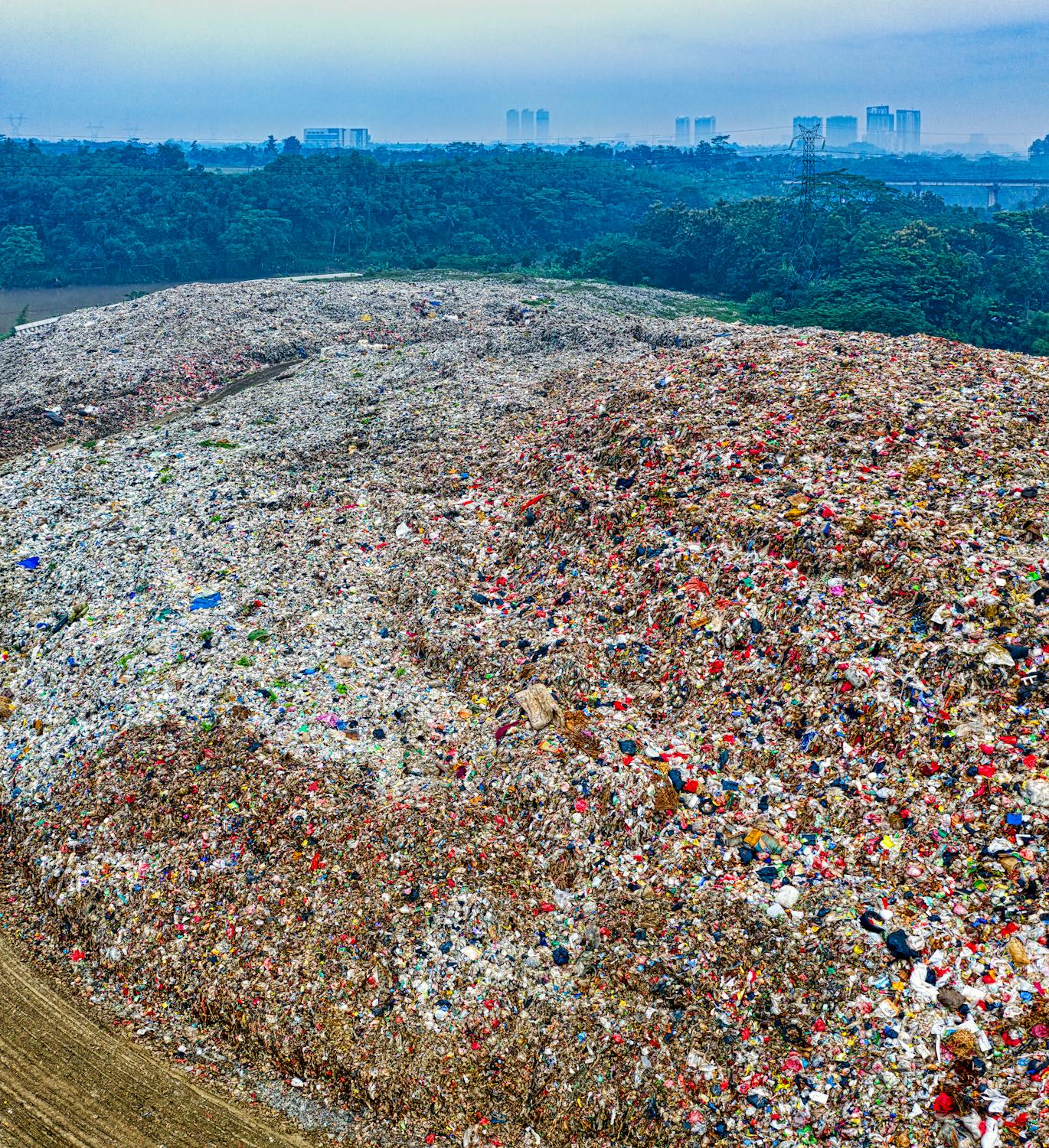
GHG Emissions Mitigation: When organic waste decomposes anaerobically in landfills, it produces methane, a potent greenhouse gas with a global warming potential more than 25 times greater than that of carbon dioxide over a 100-year period. Community composting, by facilitating aerobic decomposition, significantly reduces methane emissions. The EPA estimates that for every ton of organic waste composted rather than landfilled, methane emissions can be reduced by approximately 0.66 metric tons of CO2 equivalent. This reduction is crucial in the fight against climate change, as diverting just 50% of global organic waste from landfills to composting could mitigate millions of tons of CO2 equivalent emissions annually.
Volume Reduction: Composting can decrease the volume of organic waste by up to 50-75%. This is achieved through the biological breakdown of organic materials into more compact, nutrient-rich compost. For instance, a study by the US Environmental Protection Agency (EPA) highlighted that yard trimmings and food waste, which constitute a significant portion of municipal solid waste, can be effectively reduced through composting, diverting substantial waste volumes from landfills.
Landfill Space Savings: The diversion of organic waste from landfills to composting facilities conserves valuable landfill space. It’s estimated that composting could extend the lifespan of existing landfills by several years, depending on the community’s size and waste generation rates. For example, San Francisco’s composting program has diverted more than 1.5 million tons of food scraps and yard waste from landfills, demonstrating the potential landfill space savings achievable through effective composting initiatives.
Reduced Environmental Degradation: Beyond GHG emissions, landfilling organic waste contributes to leachate formation, which can contaminate groundwater and soil. Composting eliminates this risk by transforming waste into a beneficial product without producing harmful by-products. Moreover, the process of composting and the use of the resulting compost can improve soil health, increase water retention, and reduce the need for chemical fertilizers, further mitigating environmental degradation.
Promoting Soil Health and Biodiversity
The end product of composting enriches the soil, enhancing its fertility and structure. This not only supports sustainable agriculture and landscaping but also contributes to biodiversity, creating healthier ecosystems.
- Enhances Soil Structure and Nutrient Content: Compost enriches the soil with organic matter, improving its structure, aeration, and water retention capabilities. This addition of nutrients, such as nitrogen, phosphorus, and potassium, supports healthier plant growth, leading to more productive gardens and agricultural lands.
- Supports Microbial Diversity: The introduction of compost into the soil increases microbial activity and diversity. These microorganisms play a crucial role in breaking down organic matter, making nutrients more accessible to plants, and contributing to the natural soil ecosystem’s health and resilience.
- Reduces Soil Erosion and Degradation: By improving soil structure and moisture retention, compost helps prevent soil erosion and degradation. Healthier soils with better cohesion can withstand wind and water erosion, preserving the land’s productivity and preventing the loss of fertile tops
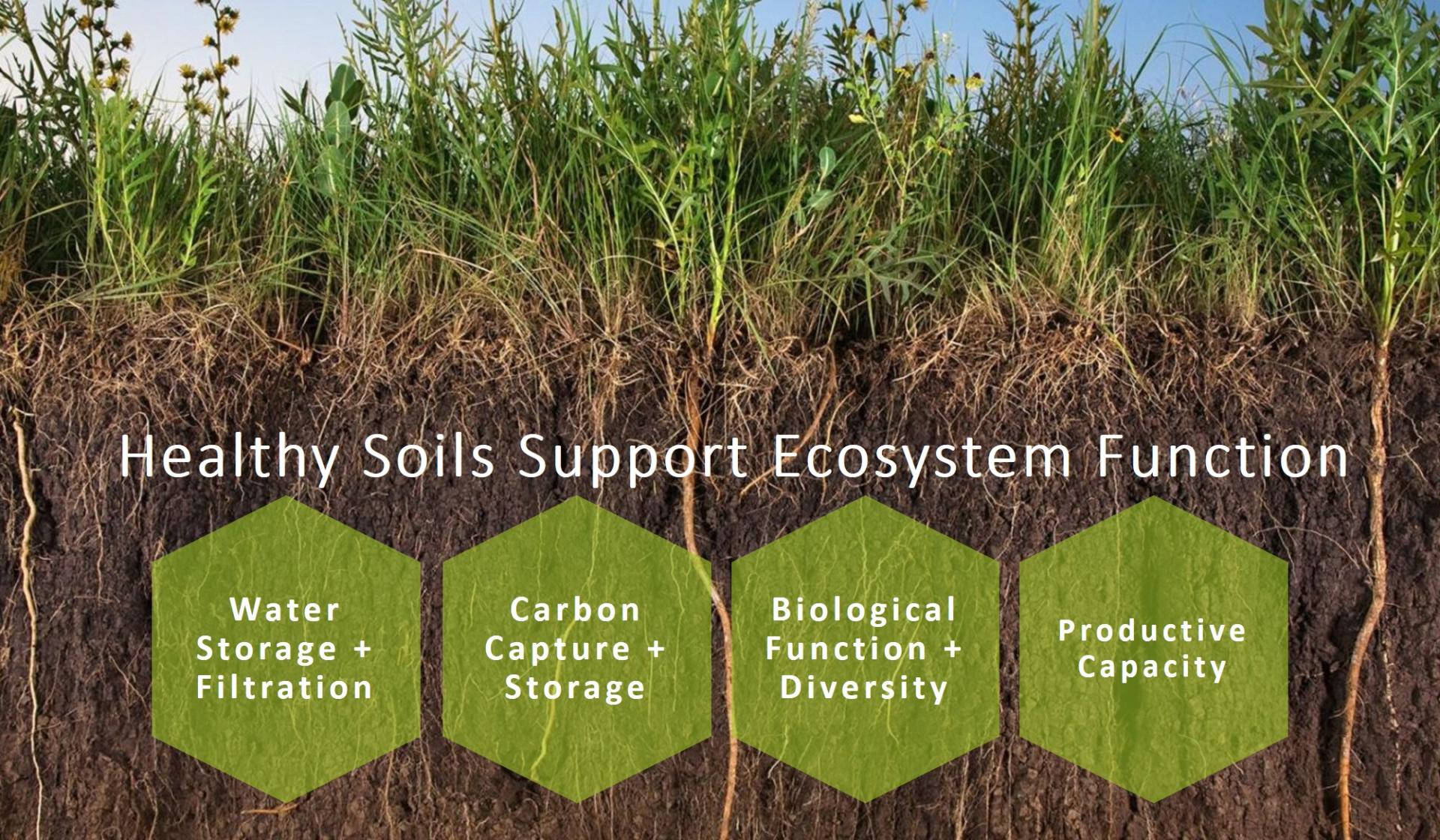 (Photo: Ecological Landscape Alliance)
(Photo: Ecological Landscape Alliance)
Less Heavy-Duty Trucks Blocking the Roads
Decentralized composting not only transforms waste management practices but also addresses the inefficiencies associated with transporting waste to centralized landfills. A significant aspect of this inefficiency lies in the operation of garbage trucks, which are notoriously energy-intensive and contribute substantially to urban air pollution. Not to mention they are obnoxiously loud and smelly.
Garbage trucks, primarily running on diesel, are among the least fuel-efficient vehicles on the road. On average, these trucks achieve a mere 2.8 miles per gallon of diesel, a stark contrast to the average passenger vehicle’s fuel efficiency. Considering that a single garbage truck can consume upwards of 14,000 gallons of diesel per year, the environmental impact becomes clear. This fuel consumption leads to the emission of approximately 148 metric tons of CO2 per truck annually, not to mention other pollutants such as nitrogen oxides and particulate matter, which contribute to urban smog and respiratory issues.
By adopting community-based composting, we can significantly reduce the reliance on these inefficient garbage trucks. Processing organic waste locally minimizes the distance waste needs to travel, thereby cutting down on the emissions and fuel consumption associated with waste collection and transportation. Studies suggest that localized composting efforts could reduce the energy used for waste collection and transportation by up to 60%, showcasing a substantial opportunity for environmental improvement.
Implementing Decentralized Composting: Strategies for Success
Choosing the Right Composting Method
The efficacy of community composting significantly depends on the choice of the right composting method. The market presents a diverse array of composting solutions designed to meet various scales of operation and specific requirements, ensuring entities can identify a system that aligns with their waste management goals.
In-vessel composting technologies, such as the BioSpeed, exemplify advanced solutions suitable for a wide range of settings, including large educational campuses, small municipalities, resorts, hotels, and more. These systems excel by meticulously controlling critical factors of the composting process—heat, agitation, oxygen levels, and microbial activity—thereby optimizing waste decomposition. Their compact design allows for the processing of substantial waste volumes within limited spaces, making them ideal for densely populated urban environments where traditional composting options may be impractical.
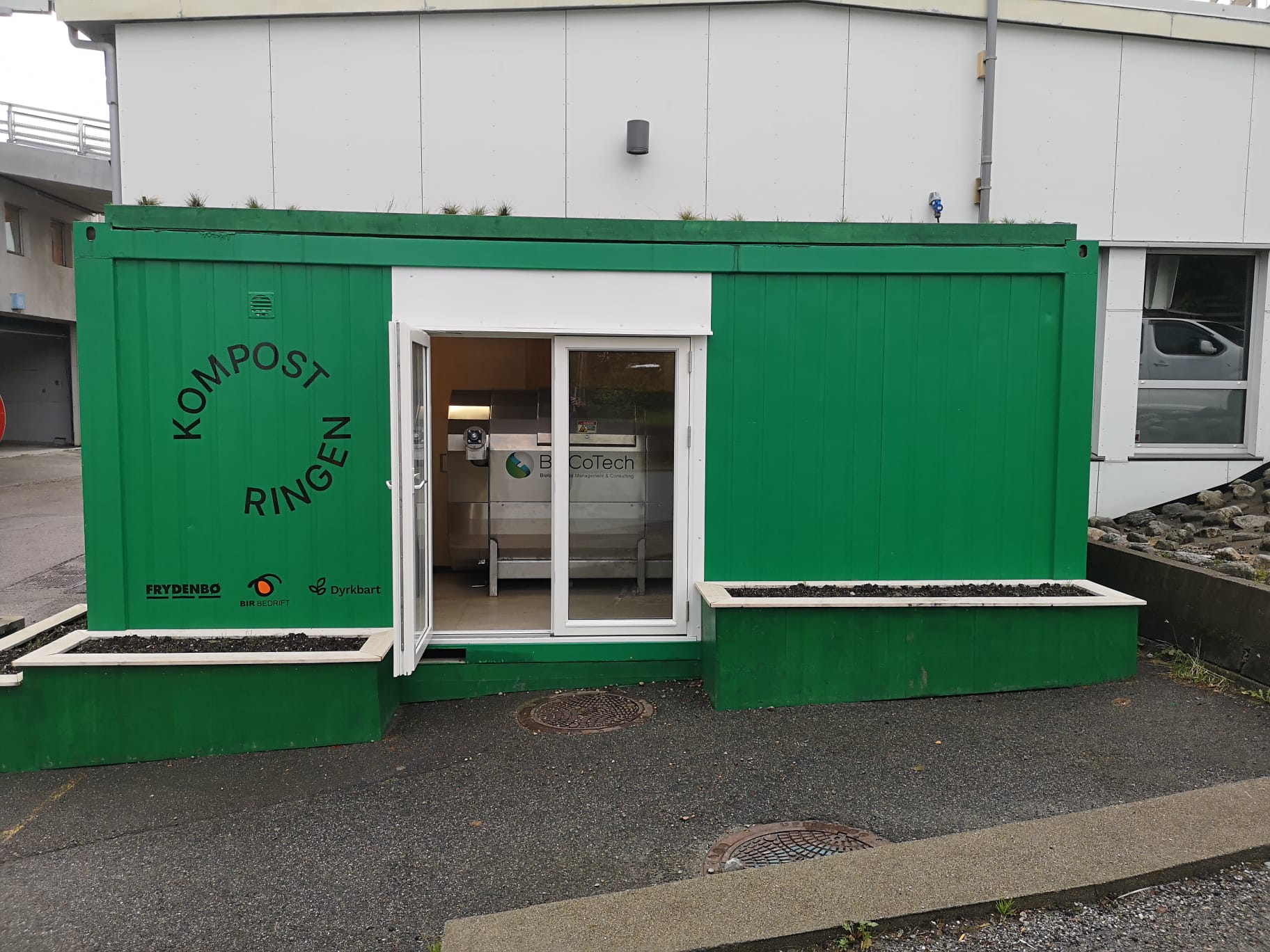 (Model: Pre-fabricated Shipping Container & BioSpeed M2 Location: Bergen, Norway)
(Model: Pre-fabricated Shipping Container & BioSpeed M2 Location: Bergen, Norway)
Above is an illustrative application of this technology’s deployment in apartment complexes, where residents can conveniently segregate organic waste in their kitchens. They can then use an access fob to deposit their waste into the BioSpeed system, where it is weighed, and residents are charged based on the weight of their organics. This model not only facilitates efficient waste processing but also encourages waste reduction through a pay-as-you-throw approach, aligning economic incentives with environmental sustainability.
Engaging Stakeholders
The transition to decentralized composting requires the buy-in of all stakeholders. Through education and engagement, entities can cultivate a culture of sustainability, encouraging participation and support for composting initiatives.
Inspiration from Success Stories
Across sectors, the adoption of decentralized composting is proving to be a wise investment. From small businesses reaping the financial benefits of reduced waste management costs to educational institutions using composting as a tool for hands-on learning about sustainability, the success stories are both inspiring and indicative of the potential that lies in this approach.
Conclusion: A Call to Action for a Resilient Future
Decentralized composting stands at the intersection of economic viability and environmental responsibility. It offers a pragmatic solution to the pressing issue of waste management, with the added benefits of financial savings, revenue generation, and enhanced resilience against future challenges. As more entities embrace this innovative approach, the vision of a sustainable, resilient future becomes increasingly attainable.
The journey toward sustainability is paved with challenges, but decentralized composting offers a clear path forward. By transforming organic waste into a resource, entities can not only safeguard the environment but also strengthen their economic footing. The time to act is now: embrace decentralized composting and unlock the potential for a healthier planet and a more prosperous future.
Mastering In-Vessel Composting: A Professional’s Guide to Black Gold
Embarking on a journey towards enhancing environmental sustainability, in-vessel composting presents itself as a pivotal initiative. This comprehensive guide aims to elucidate the intricacies of in-vessel composting, offering expert insights and strategic advice to navigate this eco-conscious endeavor. By integrating financial feasibility analyses and real-world examples, we endeavor to equip stakeholders with the knowledge and tools necessary to implement this sustainable practice effectively. Join us as we delve into this green innovation, fostering a more sustainable future together.
Unveiling In-Vessel Composting
Imagine transforming organic waste into a treasure trove of nutrients with the efficiency of a high-tech system. That’s the magic of in-vessel composting. It’s akin to having a sophisticated robot that takes kitchen scraps, yard debris, and even some paper products, then diligently works to convert them into rich, life-giving soil. It’s composting, but with a modern twist.
(BioSpeed M2 by BioCoTech Americas)
Why It’s a Game-Changer
The initial encounter with an in-vessel composting system marks a significant paradigm shift, transcending mere memorability to become a transformative experience. Envision a scenario where, against the backdrop of a bustling urban farm that vibrates with the energy of city life, a state-of-the-art in-vessel composting unit operates with remarkable efficiency and discretion. This apparatus is not merely a piece of technology; it stands as a symbol of environmental stewardship, adeptly processing substantial volumes of organic waste, thereby mitigating the risk of landfill overflow. It exemplifies the seamless integration of technological innovation with natural processes.
In-vessel composting transcends the conventional boundaries of waste management strategies, heralding a revolutionary approach that fundamentally alters our interaction with waste. This method transforms organic materials—often regarded as inconvenient byproducts, including food scraps, yard debris, and agricultural remnants—into valuable, nutrient-rich compost. This transformation challenges the prevailing narrative that views organic waste as a liability rather than a resource. The resultant compost, teeming with nutrients, serves as a powerful soil enhancer, improving soil structure, fertility, and moisture retention, starkly contrasting with traditional disposal methods that fail to recognize the intrinsic value of organic waste.
Furthermore, in-vessel composting systems are meticulously engineered to function within a controlled environment, enabling precise management of the composting process. Through the regulation of critical parameters such as temperature, oxygen levels, and humidity, these systems expedite the decomposition process, yielding compost in significantly less time compared to traditional open-air composting methods. This efficiency is especially vital in urban contexts, where space is a scarce commodity and the environmental ramifications of waste disposal are increasingly pressing concerns.
Navigating the Regulatory Maze
Navigating the complex landscape of regulations governing composting practices, especially in the context of organic waste diversion laws, can indeed seem daunting. Across the globe, jurisdictions are increasingly implementing stringent regulations aimed at reducing landfill use and promoting sustainable waste management practices. For instance, in the United States, states like California have enacted legislation such as SB 1383, which requires businesses and residential households to divert organic waste away from landfills, aiming for a 75% reduction in organic waste disposal by 2025. Similarly, in Europe, the European Union’s Landfill Directive (1999/31/EC) sets targets for reducing biodegradable municipal waste sent to landfills, pushing member states to adopt organic waste recycling and composting as key strategies.
Each region, state, or country has its own set of rules, often with specific targets, timelines, and compliance mechanisms. For example, Vermont’s Universal Recycling Law (Act 148) bans all food scraps from landfills as of July 1, 2020, requiring residents and businesses to compost or manage food waste through other approved methods. On the other hand, cities like San Francisco have local ordinances mandating composting and recycling,
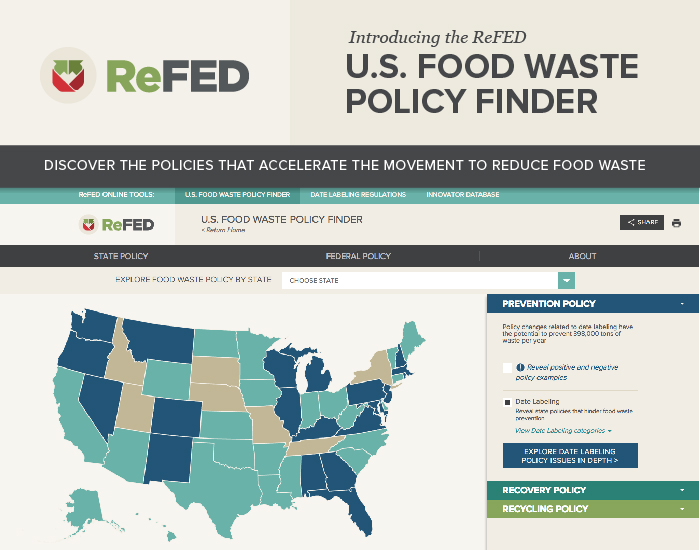
with the city providing curbside collection services for organic waste to facilitate compliance.
To successfully navigate this regulatory maze, it’s crucial to conduct thorough research into the specific requirements applicable in your area. Engaging with local environmental agencies or waste management authorities can provide valuable guidance and resources. Many regions offer workshops, online resources, and advisory services to help businesses and individuals understand their obligations under organic waste diversion laws. Compliance is not just about avoiding penalties; it’s a step towards more sustainable operations and contributes to broader environmental goals such as reducing greenhouse gas emissions and promoting soil health through the use of compost.
Refed is a great resource for all things legislation.
The Heart of the System: Technologies and Techniques
In-vessel composting systems come in various shapes and sizes, each with unique features. From rotating drums to static aerated piles, the options can be overwhelming. Visiting several facilities, each using a different system, can be an eye-opening experience. The advice here is to consider space, volume of waste, and specific needs before making a decision. It’s akin to choosing a new smartphone – what works best for one might not be the best fit for another.
The Environmental Impact: A Closer Look
When delving into the environmental impact of in-vessel composting, it’s essential to address the valid concerns surrounding potential health risks and the broader ecological footprint. With meticulous management and strict adherence to established best practices, in-vessel composting emerges not only as a safe method but also as one that confers significant environmental benefits. A key aspect of maintaining such a balance involves ensuring that the composting system is adequately aerated, which effectively mitigates common issues like unpleasant odors—a frequent worry for those new to the process.
Mitigating Health Risks through PFRP
A critical component of safe and effective in-vessel composting is compliance with the Environmental Protection Agency’s (EPA) standards, particularly those concerning the Process to Further Reduce Pathogens (PFRP). The PFRP is a set of criteria established by the EPA to ensure that compost produced through in-vessel systems is free from harmful pathogens that could pose health risks to humans, animals, and plants. These standards are part of the 40 CFR Part 503 regulations, which govern the use and disposal of sewage sludge, including biosolids that are often processed through composting.
The PFRP standards specify that compost must be subjected to a combination of temperatures and durations sufficient to significantly reduce the presence of pathogens. For in-vessel composting, this typically means maintaining the composting material at a minimum temperature of 55°C (131°F) for at least three days. This elevated temperature must be uniform throughout the composting mass, ensuring that even the most temperature-resistant pathogens are effectively neutralized.
Environmental Benefits and Best Practices
Beyond pathogen reduction, in-vessel composting offers numerous environmental benefits that align with sustainable waste management goals. By diverting organic waste from landfills, in-vessel composting reduces methane emissions—a potent greenhouse gas—thus contributing to climate change mitigation efforts. Additionally, the compost produced enriches soil health, reducing the need for chemical fertilizers and promoting more sustainable agricultural practices.
To maximize these environmental benefits while minimizing potential risks, operators of in-vessel composting systems must implement several best practices, including:
- Regular Monitoring: Continuous monitoring of temperature, moisture, and oxygen levels within the composting vessel is crucial to ensure that the process meets PFRP requirements and that the composting environment remains optimal for pathogen reduction and material decomposition.
- Feedstock Control: Careful selection and preparation of the organic waste materials entering the composting system can prevent the introduction of contaminants and ensure a balanced carbon-to-nitrogen ratio, facilitating efficient composting.
- System Maintenance: Routine inspections and maintenance of the in-vessel composting system help prevent mechanical failures that could disrupt the composting process and lead to environmental compliance issues.
- End-product Testing: Regular testing of the finished compost for pathogens, heavy metals, and other contaminants ensures that the product is safe for use and meets all relevant EPA standards and guidelines.
By embracing these practices and adhering to EPA standards, particularly the PFRP considerations, in-vessel composting can be conducted in a manner that is not only environmentally responsible but also conducive to public health and safety. This careful balance underscores the role of in-vessel composting as a key component of sustainable waste management strategies, capable of transforming organic waste into a valuable resource while mitigating its potential environmental impacts.
Building Community Connections
Beyond the classroom, in-vessel composting initiatives can galvanize entire communities. Community gardens, local farms, and urban green spaces that adopt these systems often hold workshops and open days, inviting residents to learn about the benefits of composting. These events serve as platforms for sharing knowledge, exchanging ideas, and fostering a collective environmental ethos. Participants leave not just with a deeper understanding of composting but with a sense of belonging to a community that values sustainability.
 Encouraging Collaborative Efforts
Encouraging Collaborative Efforts
The implementation of in-vessel composting systems can also inspire collaborative efforts between different community sectors. Businesses, for instance, can partner with local schools or community gardens to provide organic waste for composting projects. In return, they receive compost for landscaping or corporate green spaces, closing the loop in a mutually beneficial cycle. These partnerships highlight the interconnectedness of community members and their shared responsibility toward environmental stewardship. On the right is a picture of the waste management team at the Auraria Sustainable Campus Program with a BioSpeed M4.
Promoting Environmental Stewardship
Ultimately, the integration of in-vessel composting into community and educational settings cultivates a culture of environmental stewardship. It teaches the value of resources often taken for granted and discarded. By understanding the impact of waste and learning to view it as a resource rather than refuse, individuals are empowered to make more sustainable choices in their daily lives. This shift in perspective is crucial for fostering long-term environmental responsibility and care for the planet.
Best Practices for In-Vessel Composting
- Monitor and Control Environmental Conditions: The success of in-vessel composting largely depends on maintaining optimal conditions within the composting vessel. Regularly monitor and adjust temperature, moisture levels, and aeration to ensure the composting process proceeds efficiently. Ideal conditions include maintaining temperatures between 55°C to 65°C (131°F to 149°F) for pathogen reduction and adjusting moisture content to around 50-60% for optimal microbial activity.
- Balance the Carbon-to-Nitrogen Ratio: Achieving the right balance between carbon-rich “browns” (such as wood chips, dry leaves) and nitrogen-rich “greens” (such as food scraps, and green plant material) is crucial. A general guideline is to aim for a carbon-to-nitrogen ratio of about 30:1. This balance supports microbial growth and decomposition while minimizing odors and accelerating the composting process.
- Ensure Proper Feedstock Preparation: Before adding organic waste to the composting machine, it’s important to prepare the feedstock properly. This includes removing contaminants (like plastics and metals), and chopping or shredding larger items to increase the surface area for microbes to work on. Proper preparation enhances decomposition efficiency and prevents equipment malfunctions.
- Perform Regular Maintenance and Cleaning: Like any mechanical system, in-vessel composting machines require regular maintenance to operate smoothly. Follow the manufacturer’s guidelines for servicing and inspecting the machine to prevent breakdowns. Cleaning the system regularly also prevents the buildup of materials that could hinder aeration or moisture control.
- Track and Adjust Based on Compost Quality: Continuously assess the quality of the compost being produced and adjust operational parameters as needed. Factors to consider include the compost’s maturity, nutrient content, and any presence of pathogens or contaminants. Use feedback from these assessments to fine-tune the composting process, such as adjusting feedstock ratios, environmental conditions, or processing times.
Breaking Down the Jargon
The technical jargon of in-vessel composting can feel like learning a new language. But it doesn’t have to be that way. By simplifying complex concepts and using relatable analogies, in-vessel composting becomes accessible to everyone. After all, sustainability is a collective journey, and the more knowledge is shared, the better.
Staying Ahead: Embracing Innovation
The world of in-vessel composting is ever-evolving, with new technologies and innovations emerging regularly. Keeping abreast of these developments can enhance composting practices and environmental impact. It’s like being a surfer; staying ahead of the wave ensures the best ride.
Interactive Learning
One of the most rewarding aspects of the journey into in-vessel composting is engaging with others interested in the topic. Whether through workshops, online forums, or social media, creating spaces for interactive learning enriches the experience for everyone involved. It’s a reminder that in the realm of sustainability, everyone is both a student and a teacher.
Wrapping It Up: The Path Forward
In-vessel composting is more than just a waste management solution; it’s a step towards a more sustainable and connected world. Whether one is a business looking to reduce their environmental footprint, a community leader seeking to engage neighbors, or simply an individual curious about green practices, in-vessel composting offers a path worth exploring.
BioSpeed Compost Technology: Revolutionize Your Campus With These 7 Steps
In today’s rapidly evolving world, sustainability has become more than just a buzzword; it’s a necessity. Universities, as pillars of innovation and education, have a unique opportunity to lead by example in the global shift towards greener practices. One groundbreaking approach that’s setting new standards is the integration of The BioSpeed Compost Technology into university campuses. This isn’t just about waste management; it’s about transforming waste into wealth, fostering community engagement, and paving the way for a sustainable future. Let’s dive into how to implement this revolutionary technology into university campuses, one compost cycle at a time.
1. Project Planning: Laying the Groundwork for Green Innovation
The journey begins with meticulous project planning. Identifying stakeholders is crucial, as it brings together the minds and hearts that will drive the project forward. From students and faculty to administrative staff and external partners, each stakeholder plays a pivotal role in the project’s success. Conducting a feasibility study is next, ensuring that the dream of a greener campus is not only visionary but also viable. Developing a project timeline and securing funding are the final steps in turning the vision into a tangible plan. This phase sets the stage for a project that’s not just about installing a compost machine but about weaving sustainability into the fabric of campus life.
2. Site Selection: Choosing the Heart of Compost Operations
The next step is site selection, a critical phase where the ideal location for the BioSpeed is determined. This involves evaluating potential locations, assessing space and infrastructure requirements, and obtaining necessary permits and approvals. The chosen site will not only house the technology but also become a central hub for sustainability efforts on campus, symbolizing the university’s commitment to environmental stewardship.
3. Compost Machine Selection: Picking the Powerhouse of Sustainability
Selecting the BioSpeed Compost Technology involves more than just choosing a machine; it’s about choosing a partner in the university’s sustainability journey. Determining capacity needs is the first step, followed by researching and comparing models. Operational costs, manufacturing time, and the technology’s alignment with the university’s sustainability goals are all considered, ensuring that the chosen system is efficient, effective, and emblematic of the campus’s green aspirations.
4. Implementation: Turning Plans into Reality
With the planning and selection phases complete, it’s time for implementation. Preparing the site and installing the BioSpeed are monumental steps, but the process doesn’t stop there. Training staff and volunteers is essential, as they are the stewards of this green technology, ensuring its smooth operation and integrating it into the campus’s daily life.
5. Operation: The Heartbeat of Campus Sustainability
The operation of The BioSpeed is where the magic happens. Collecting organic waste, monitoring the composting process, and maintaining the equipment are daily tasks that contribute to a larger purpose: transforming waste into a resource. This phase is about more than just managing waste; it’s about nurturing a living, breathing ecosystem that supports the campus and the environment.
In just 5-10 minutes per day, users can wheel their organic waste to the machine. By following the BioSpeed Daily Checklist and refreshing up on BioSpeed training videos, users can ensure efficient and effective operations.
6. Engagement and Education: Cultivating a Green Culture
Perhaps the most transformative aspect of integrating the BioSpeed into a university campus is the opportunity for engagement and education. Developing educational programs and promoting campus-wide participation are essential for fostering a culture of sustainability. Through workshops, seminars, and hands-on experiences, students and staff are not just informed but also empowered to be active participants in the university’s sustainability efforts.
7. Sustainability and Expansion: Looking to the Future
The final piece of the puzzle is ensuring the long-term sustainability and potential expansion of the composting program. Evaluating system performance and exploring expansion opportunities are crucial for maintaining momentum and building on the successes of the initiative. This phase is about dreaming bigger, aiming higher, and ensuring that the university’s sustainability efforts continue to grow, evolve, and inspire.
(Campus Composting with the BioSpeed M4)
Conclusion: A Call to Action for Sustainable Transformation
The integration of the BioSpeed Compost Technology into university campuses is more than just an environmental initiative; it’s a call to action. It’s a testament to what can be achieved when innovation, commitment, and community come together for a common purpose. This isn’t just about managing waste; it’s about reimagining what a sustainable future looks like and taking bold steps towards it. Universities have the power to lead by example, showing the world that sustainability is not just possible but also practical, impactful, and essential. The BioSpeed is not just changing the game in sustainability; it’s setting a new standard for what it means to be a green campus. The future is green, and it starts with us.

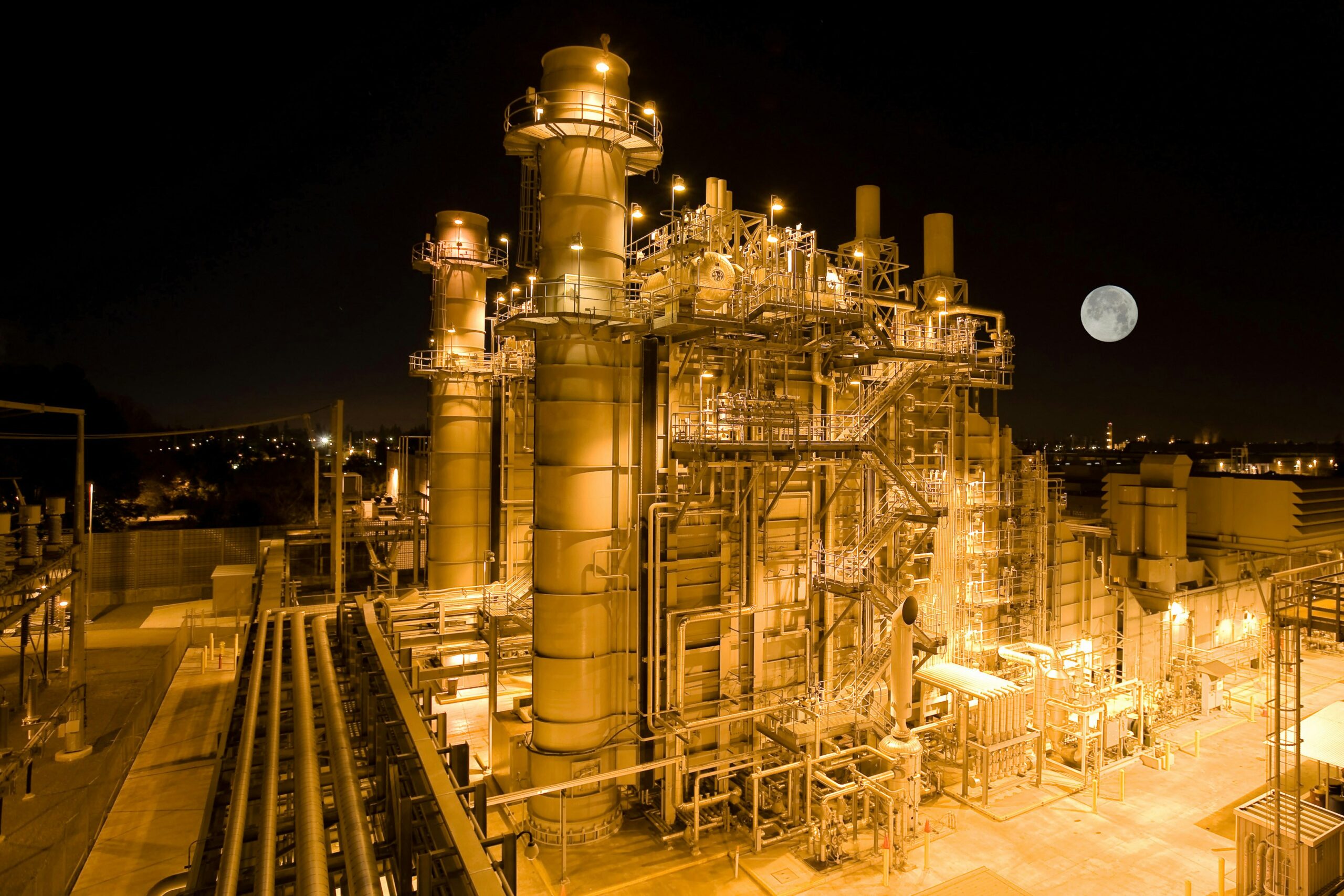

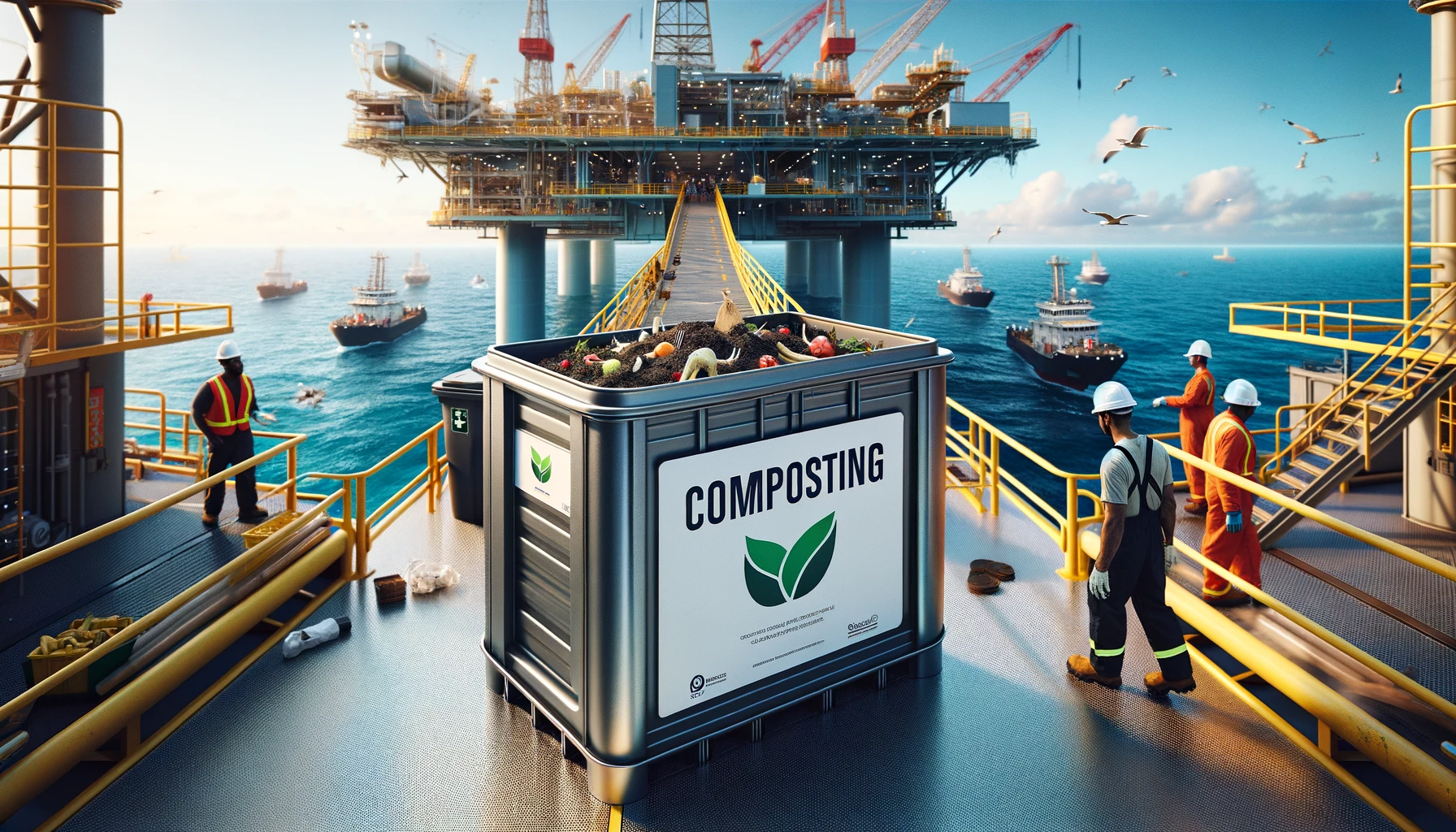

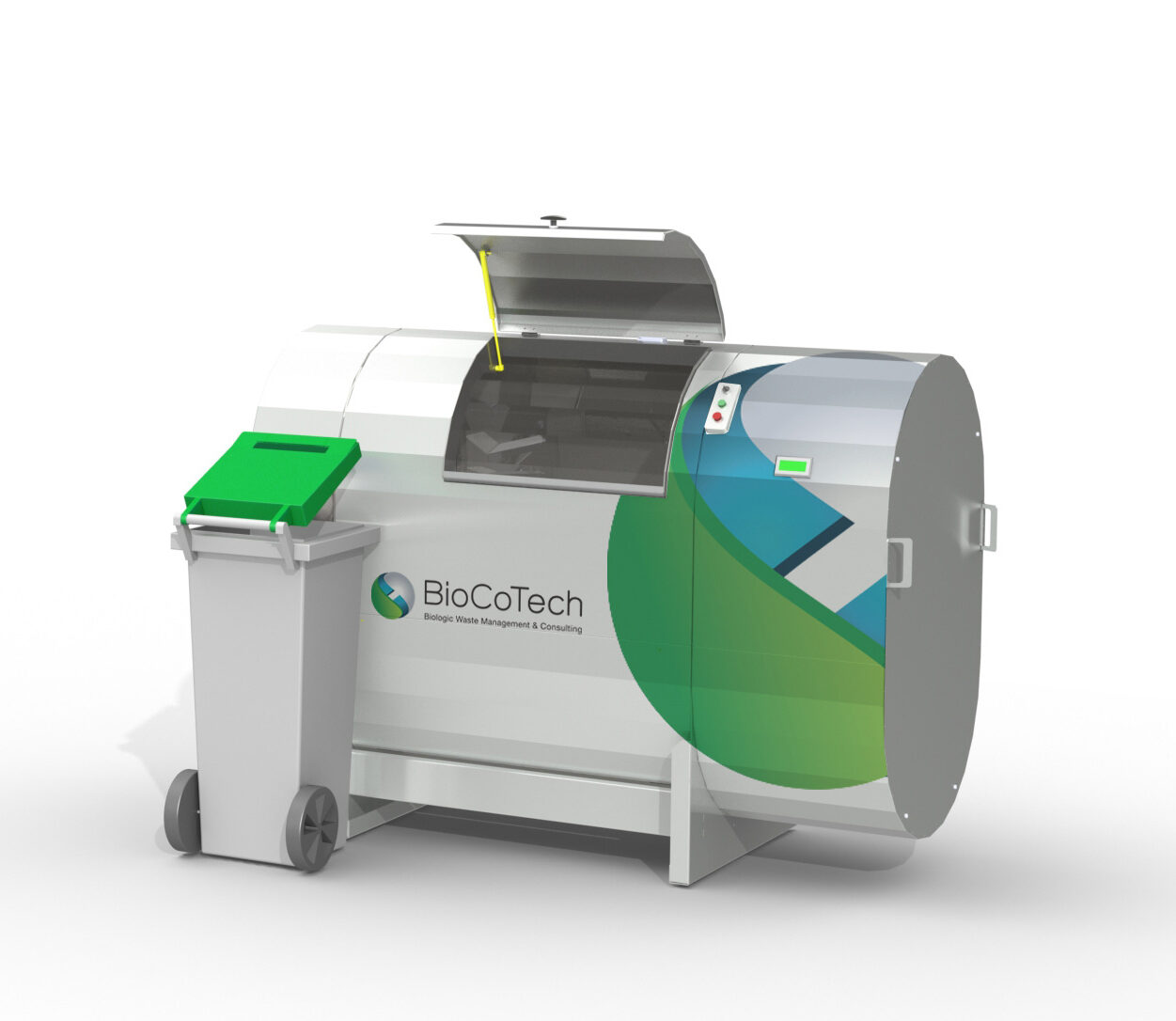
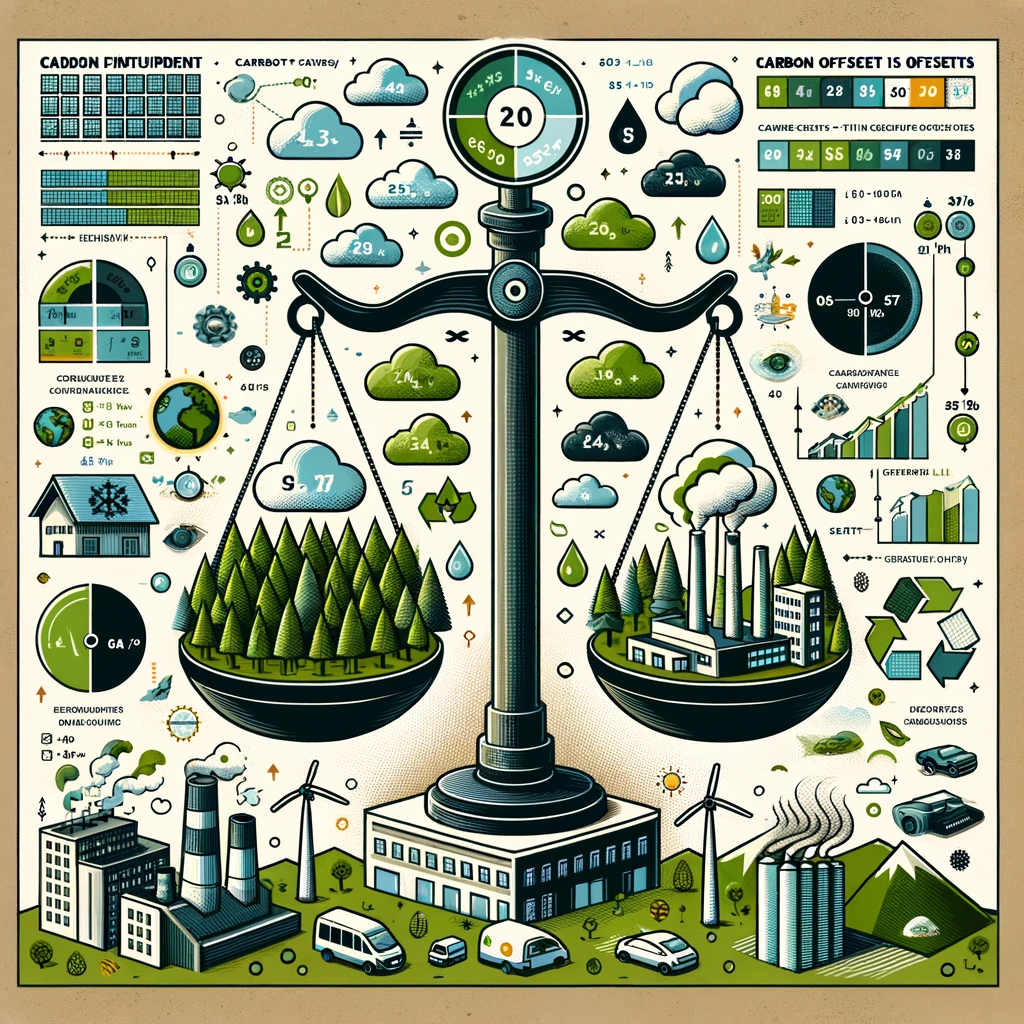
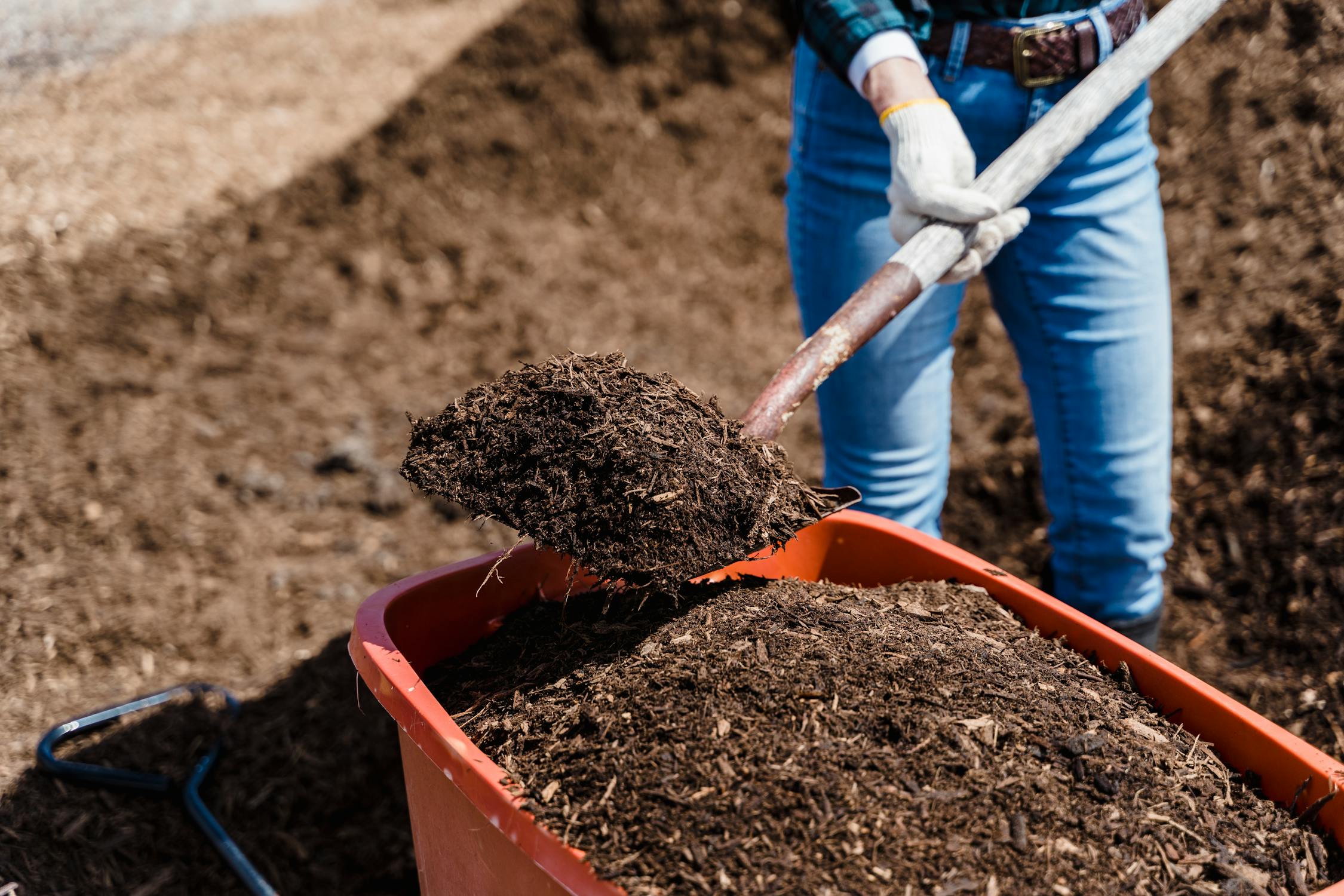






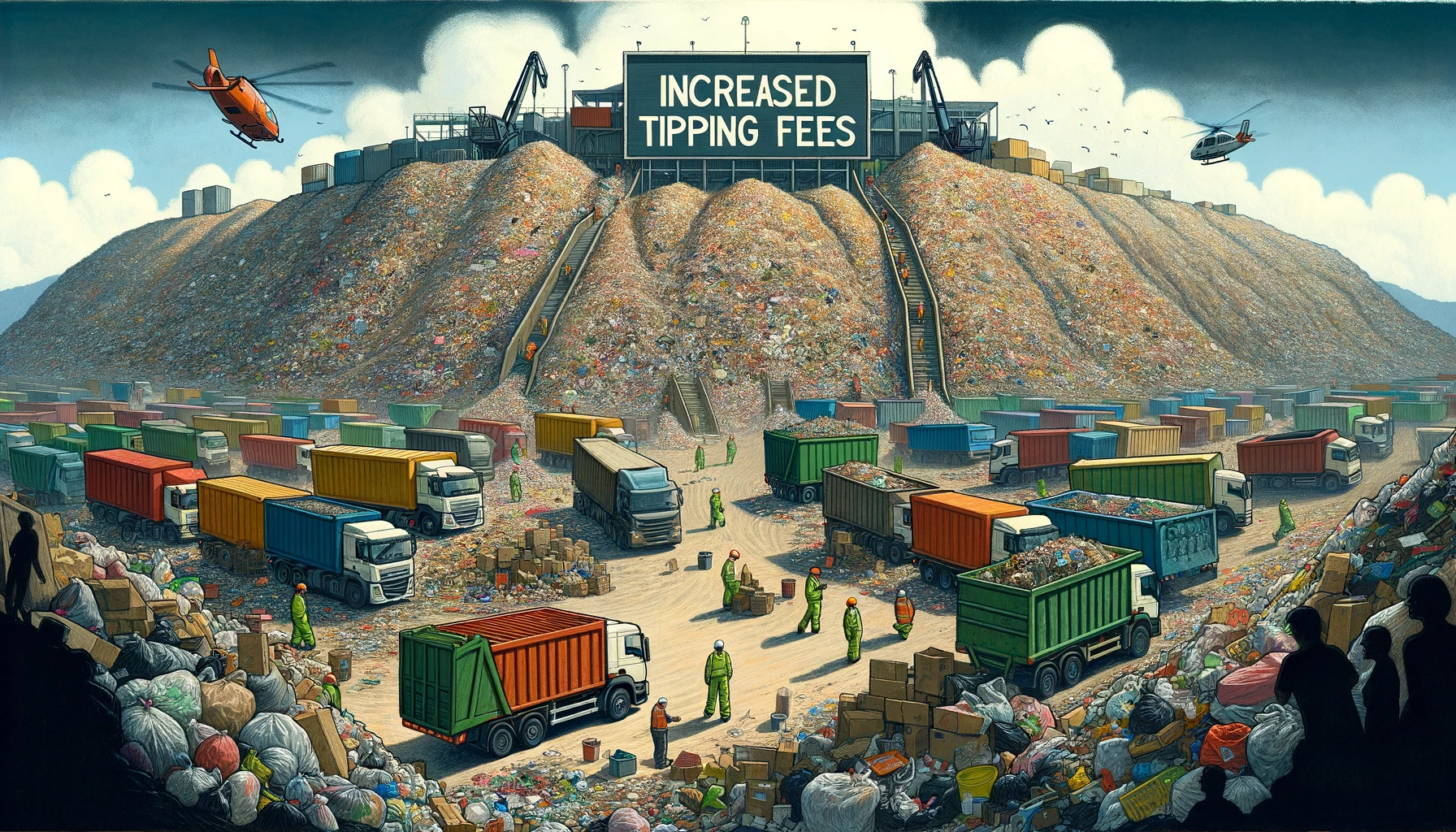

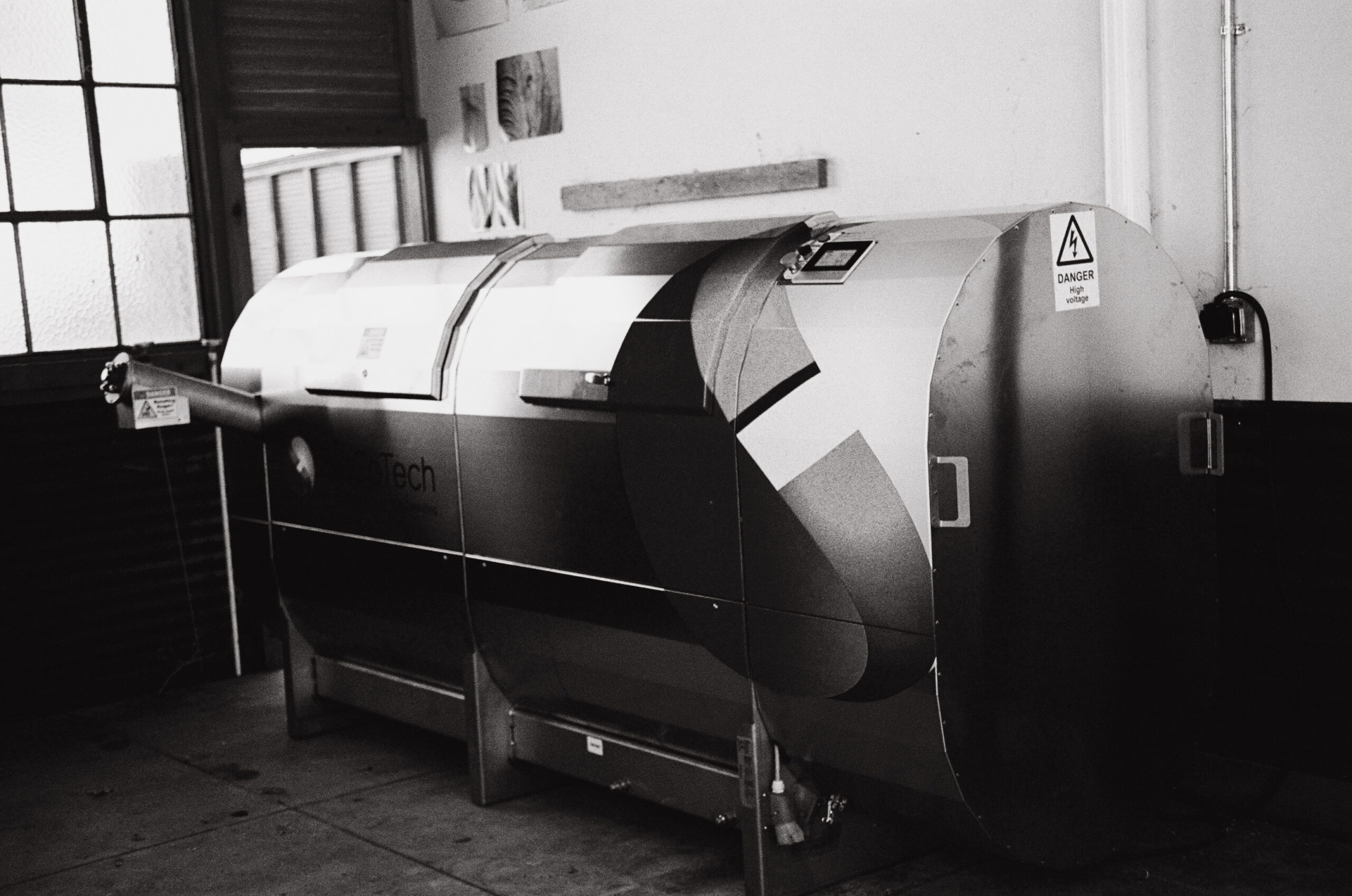
 Encouraging Collaborative Efforts
Encouraging Collaborative Efforts